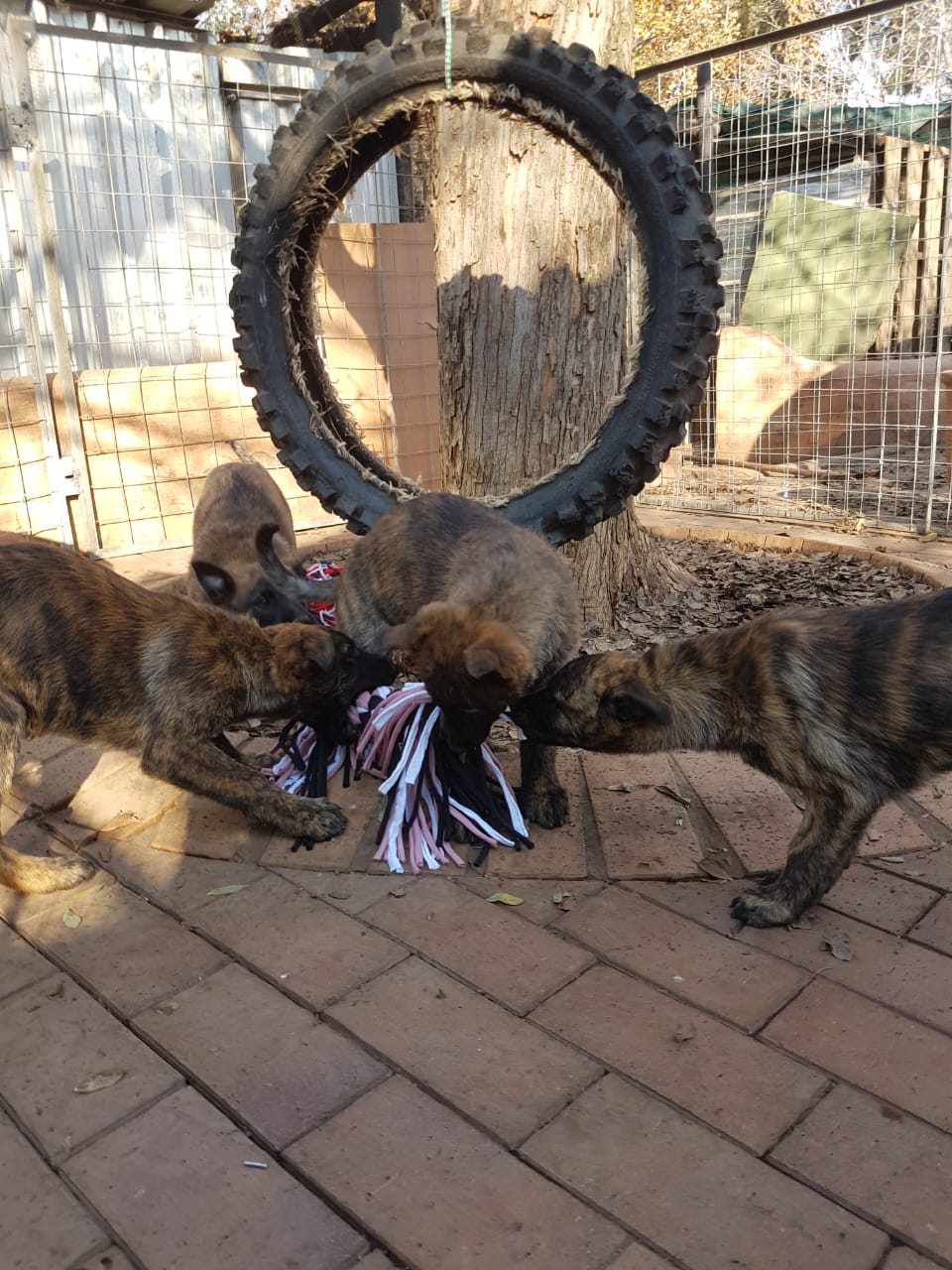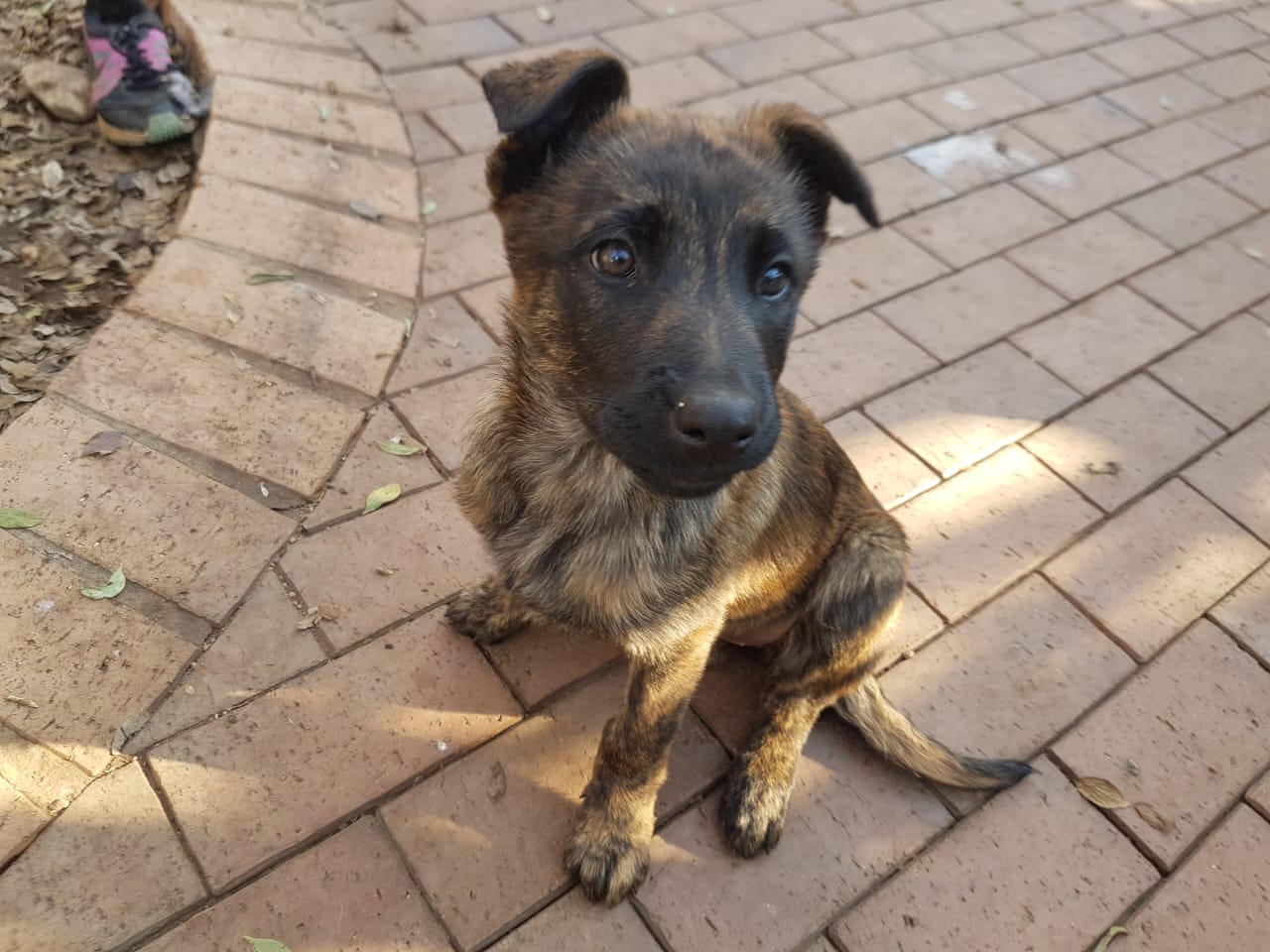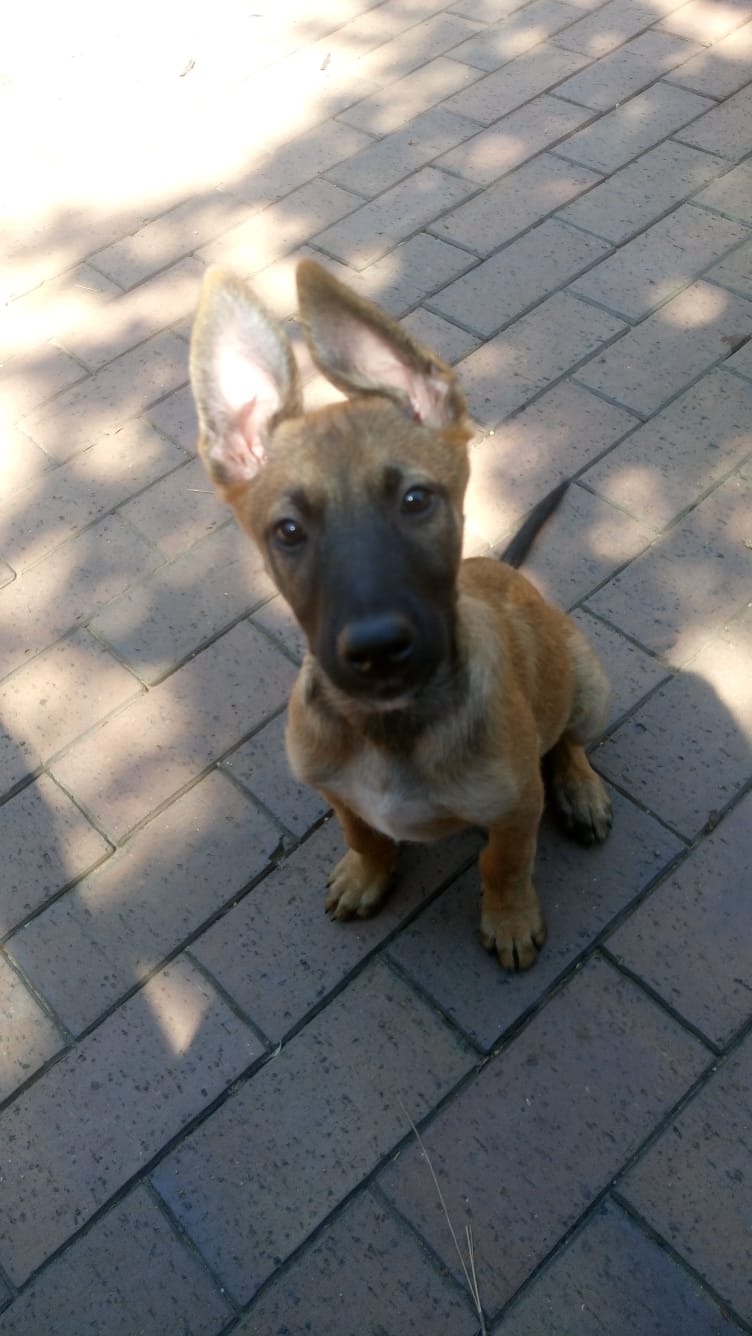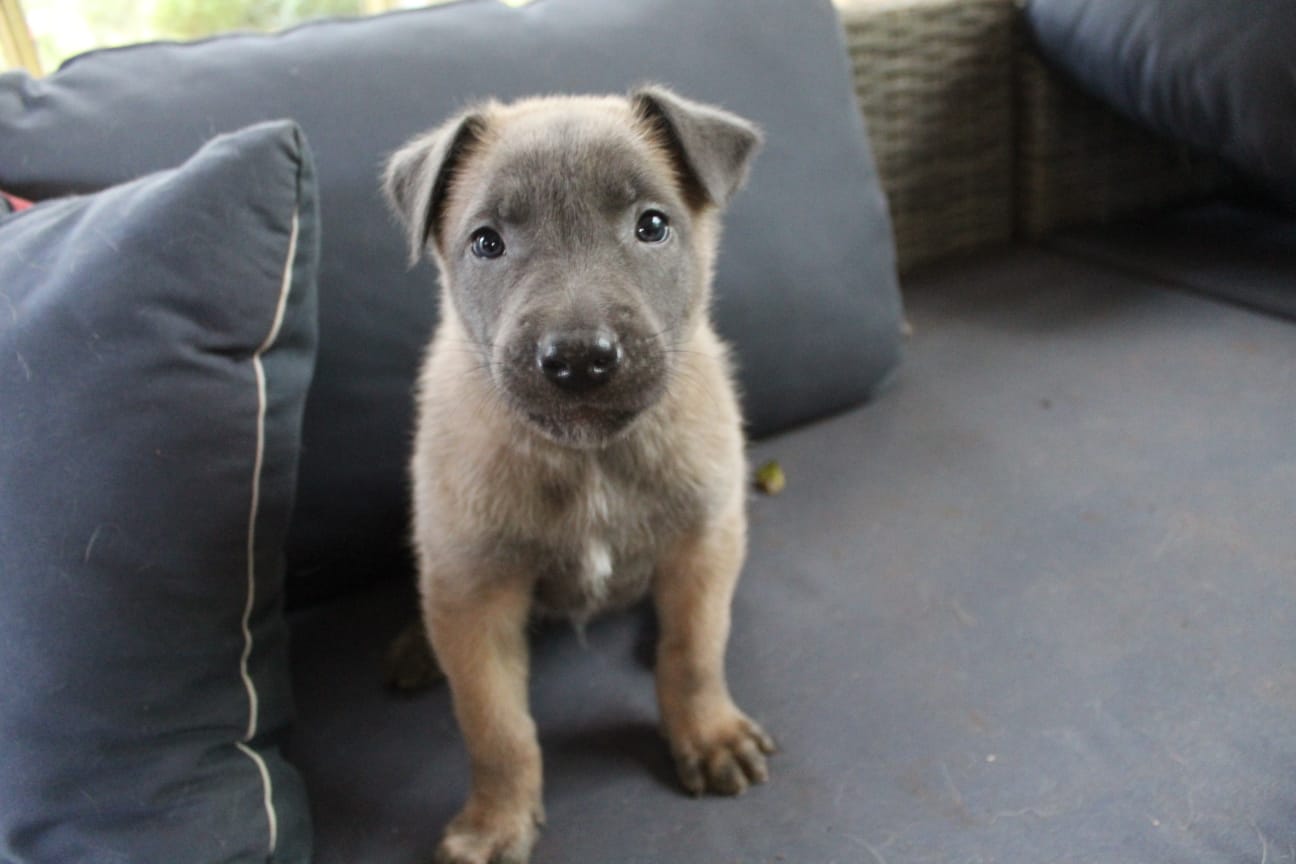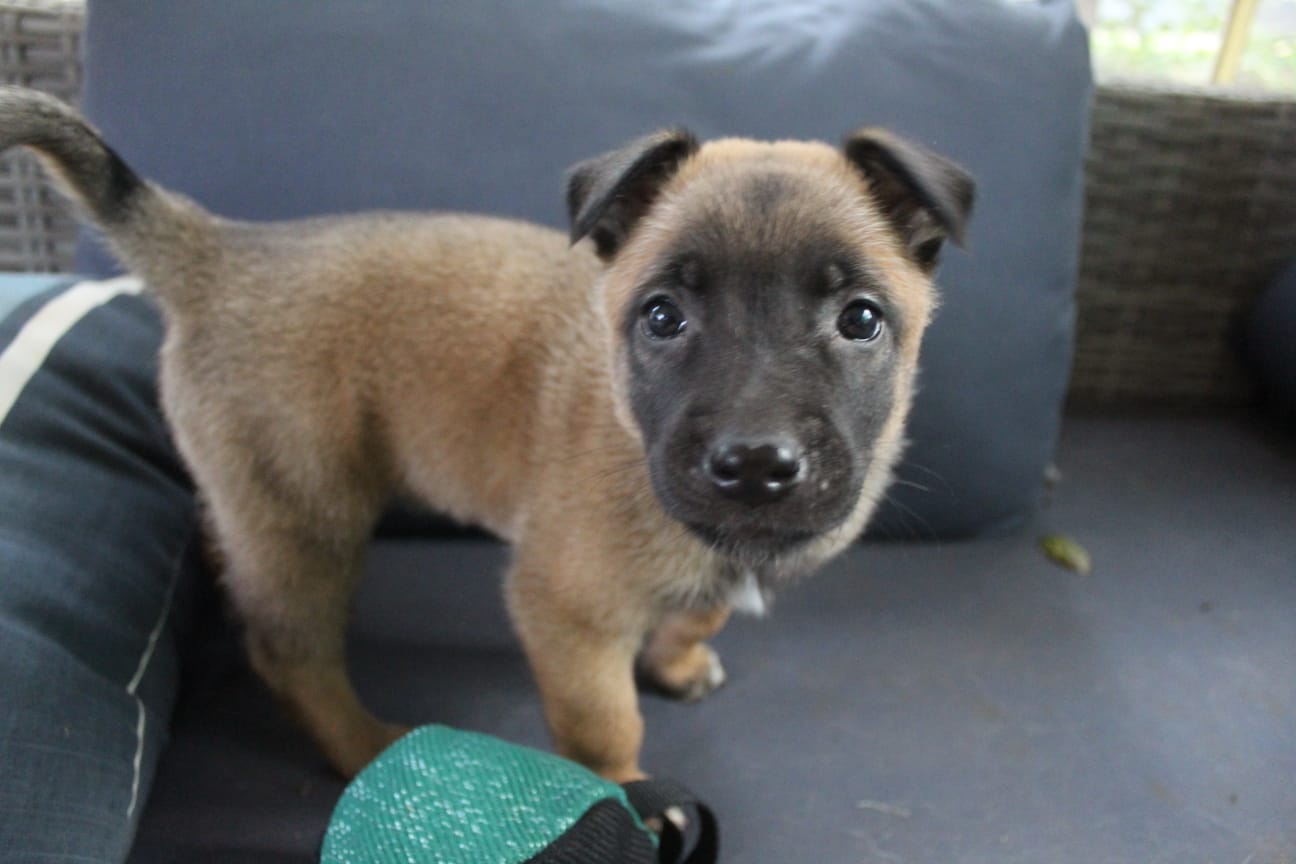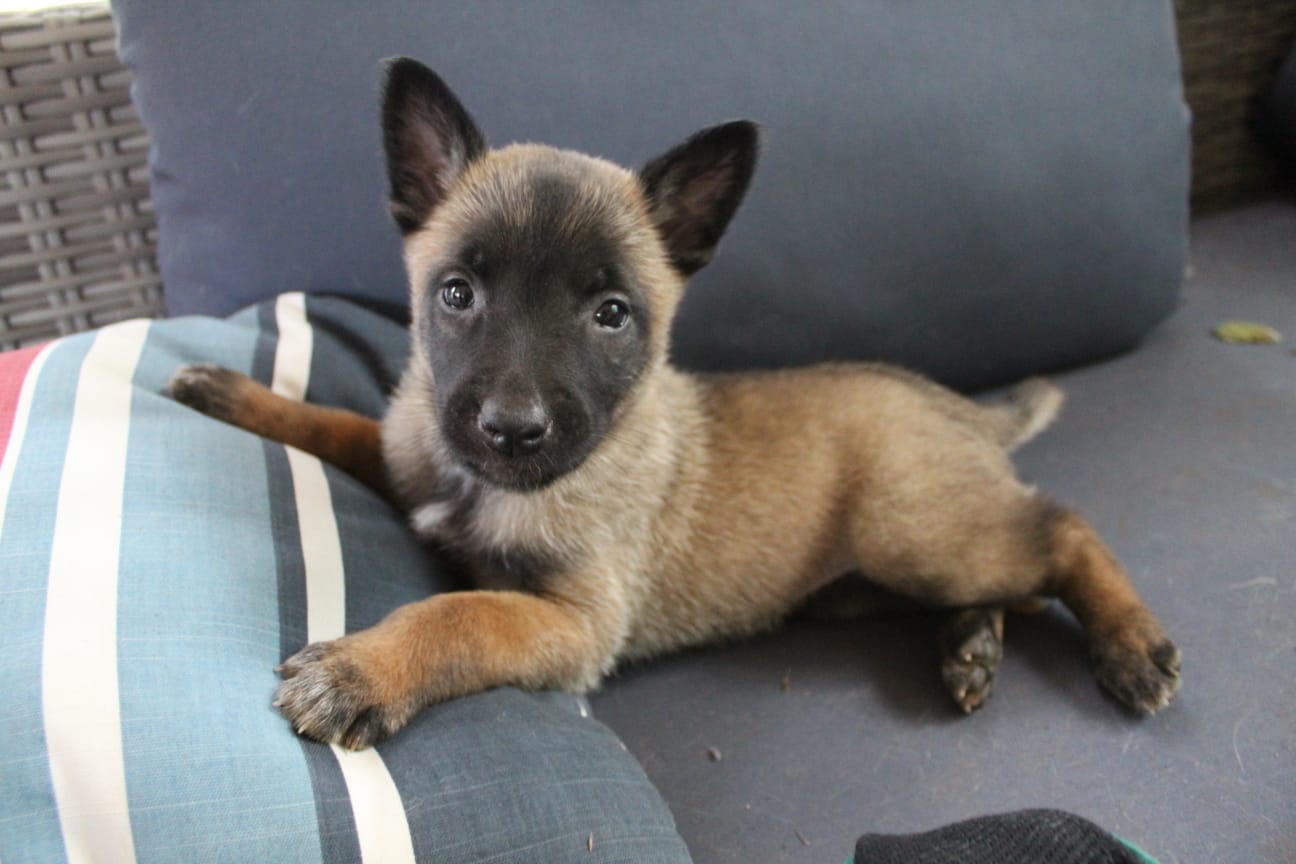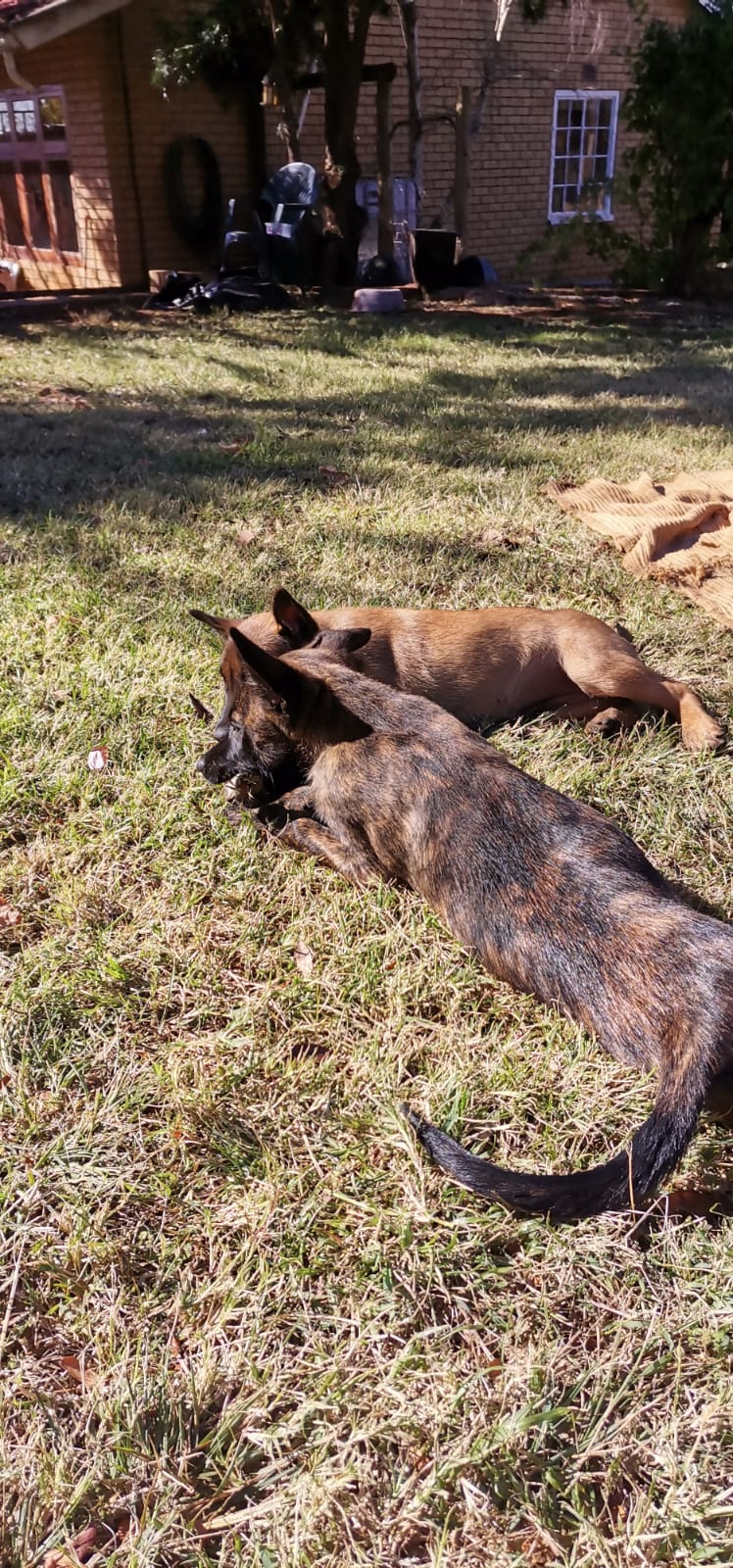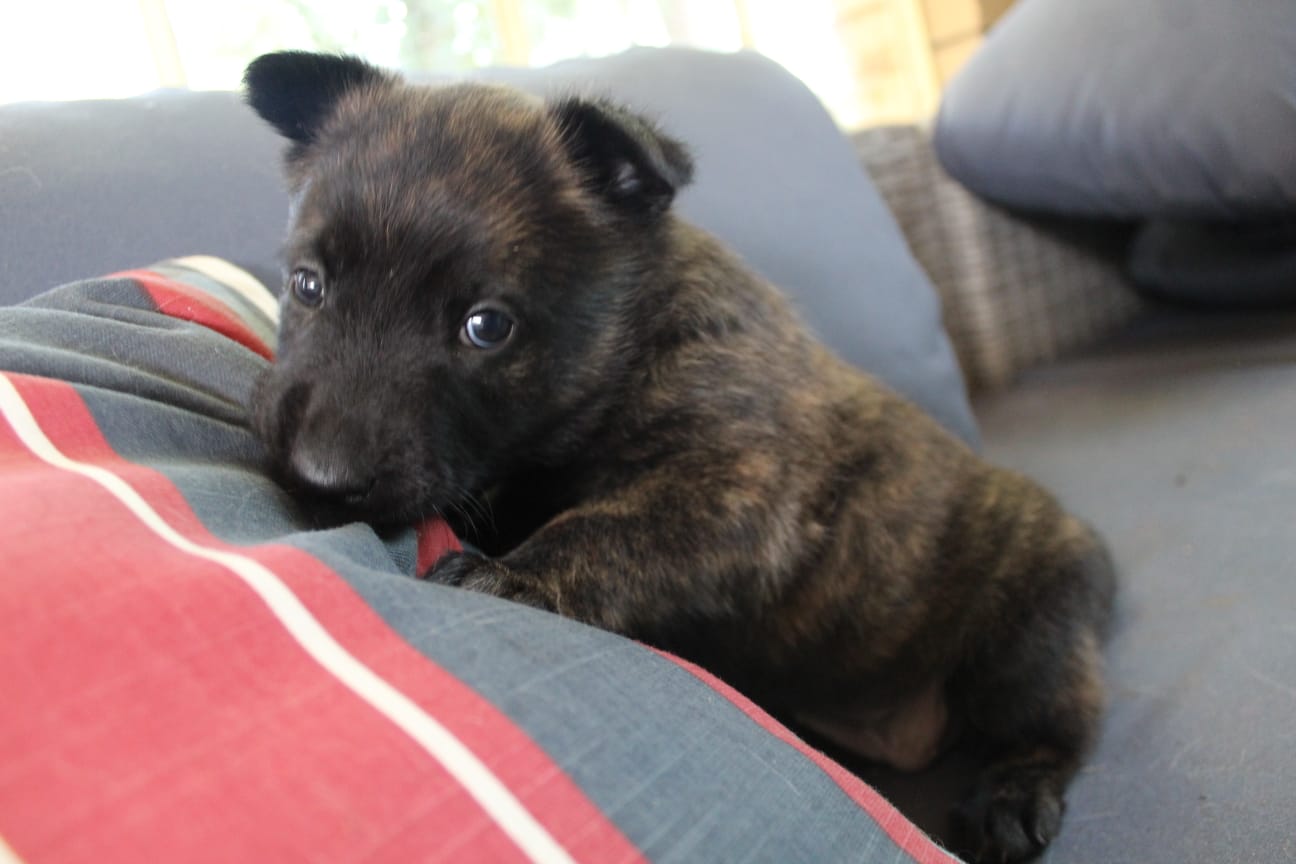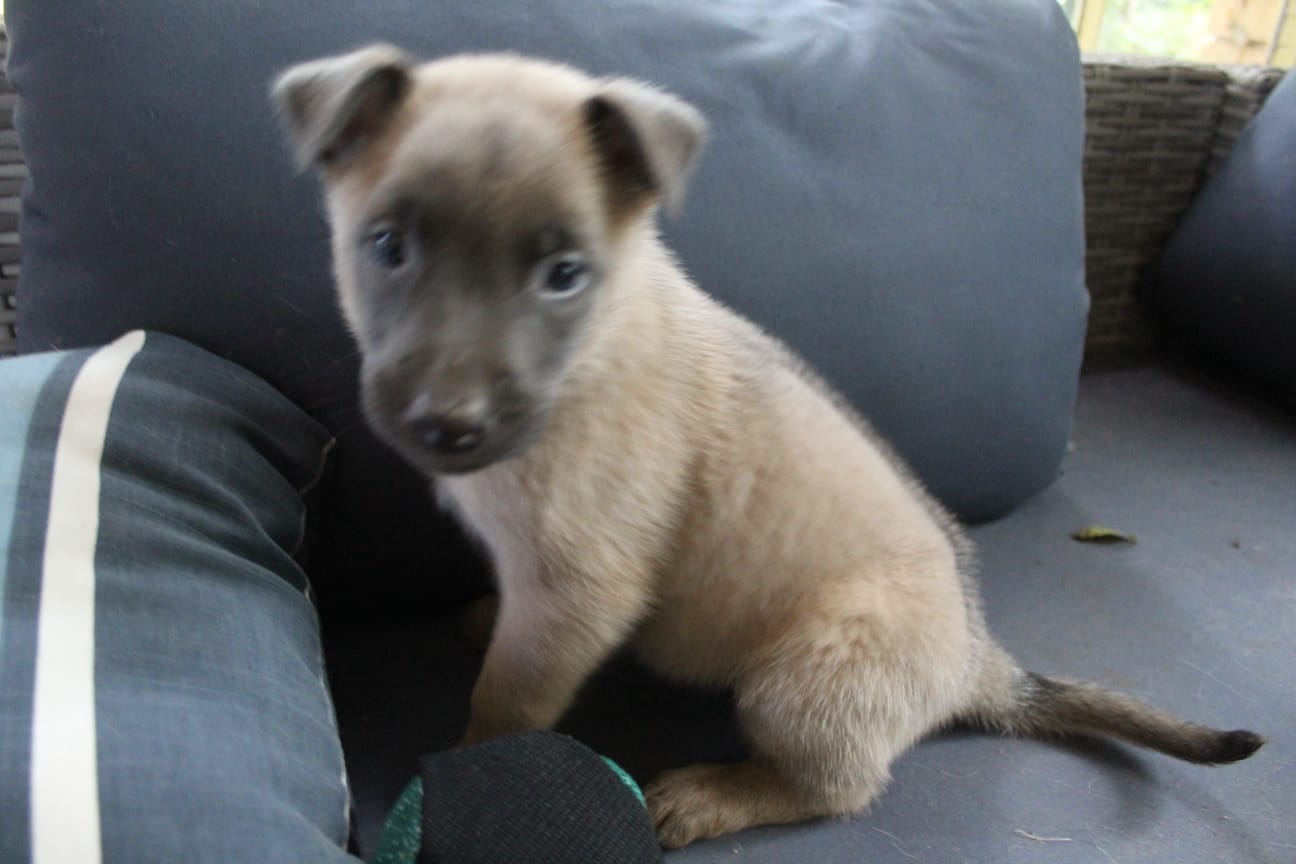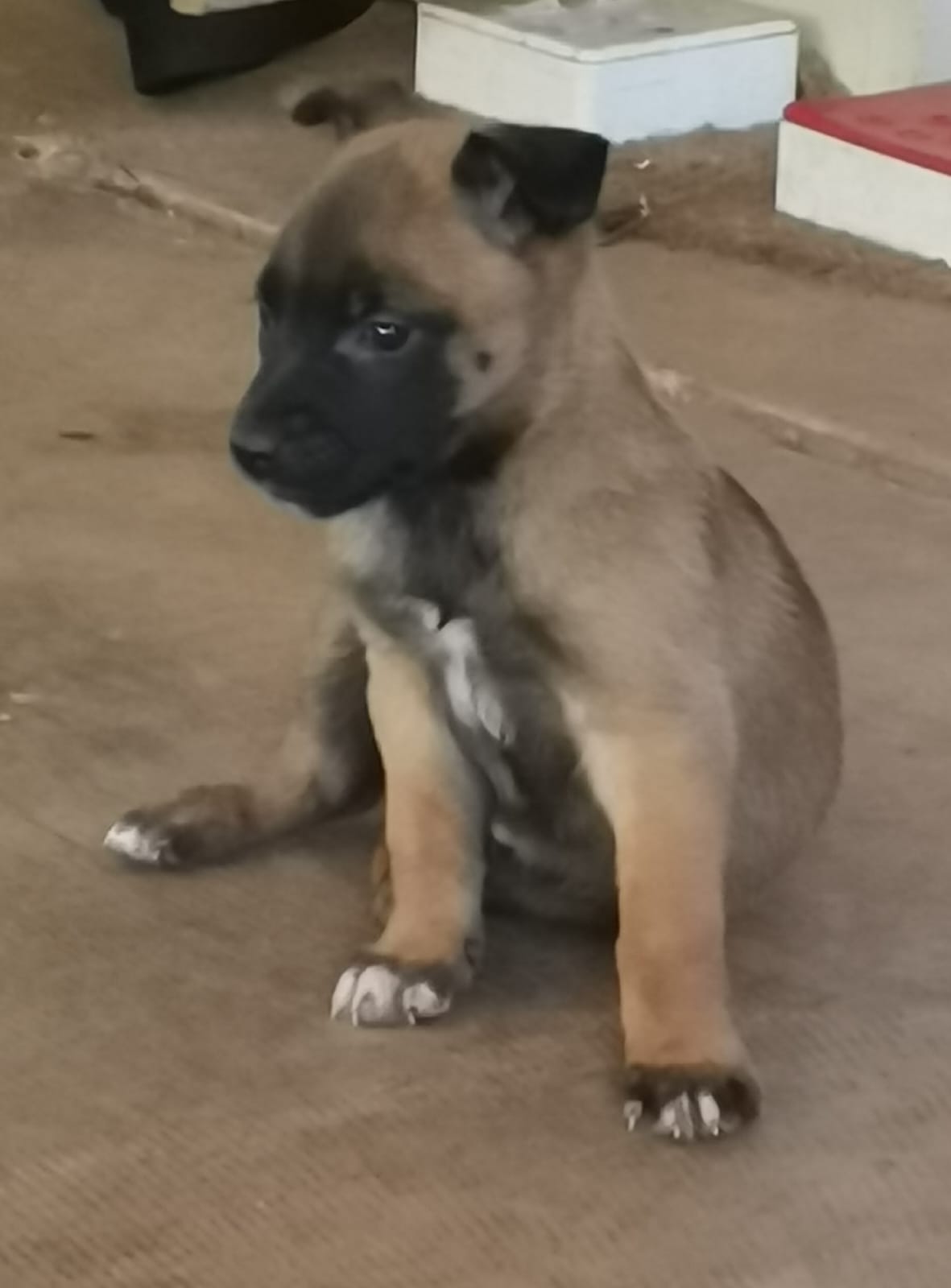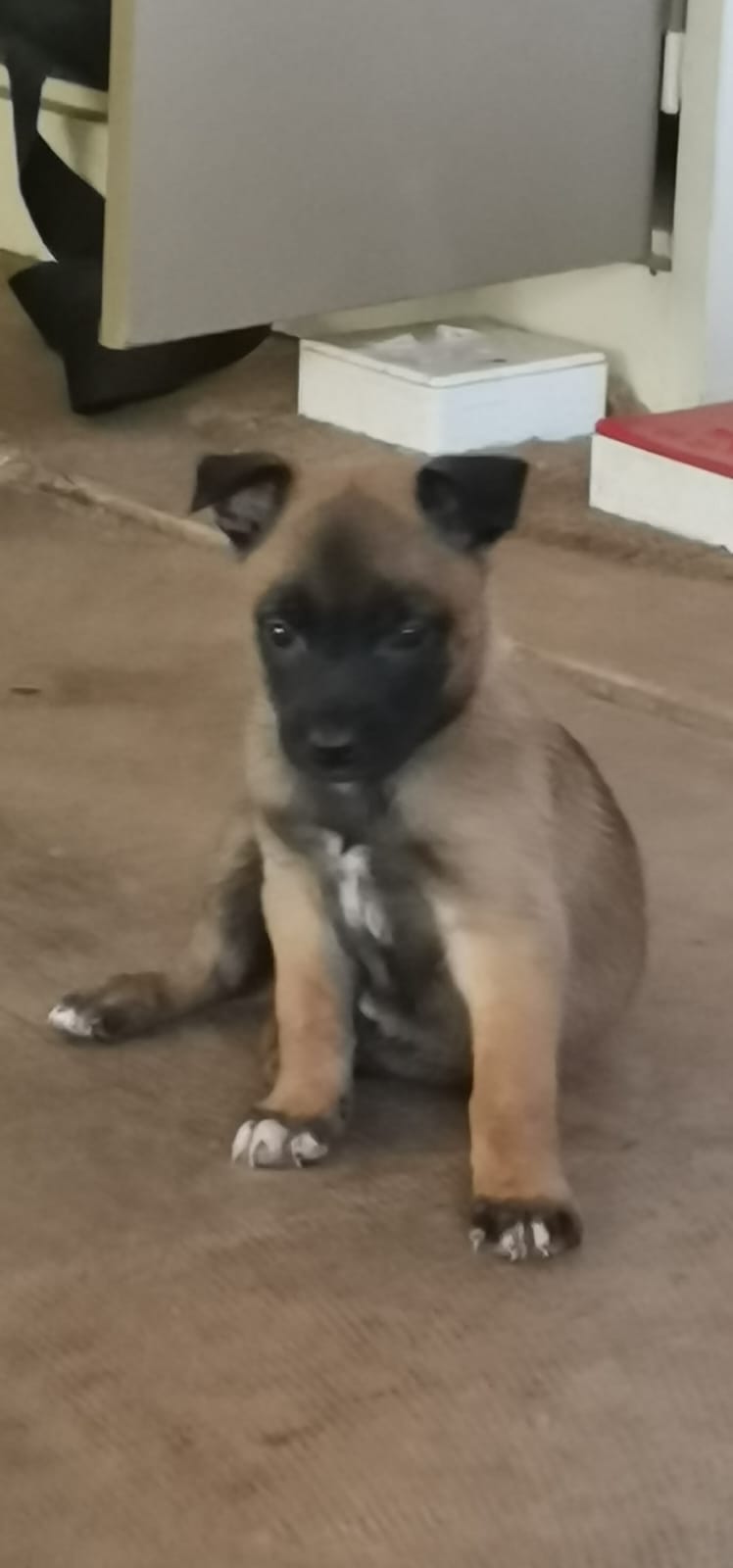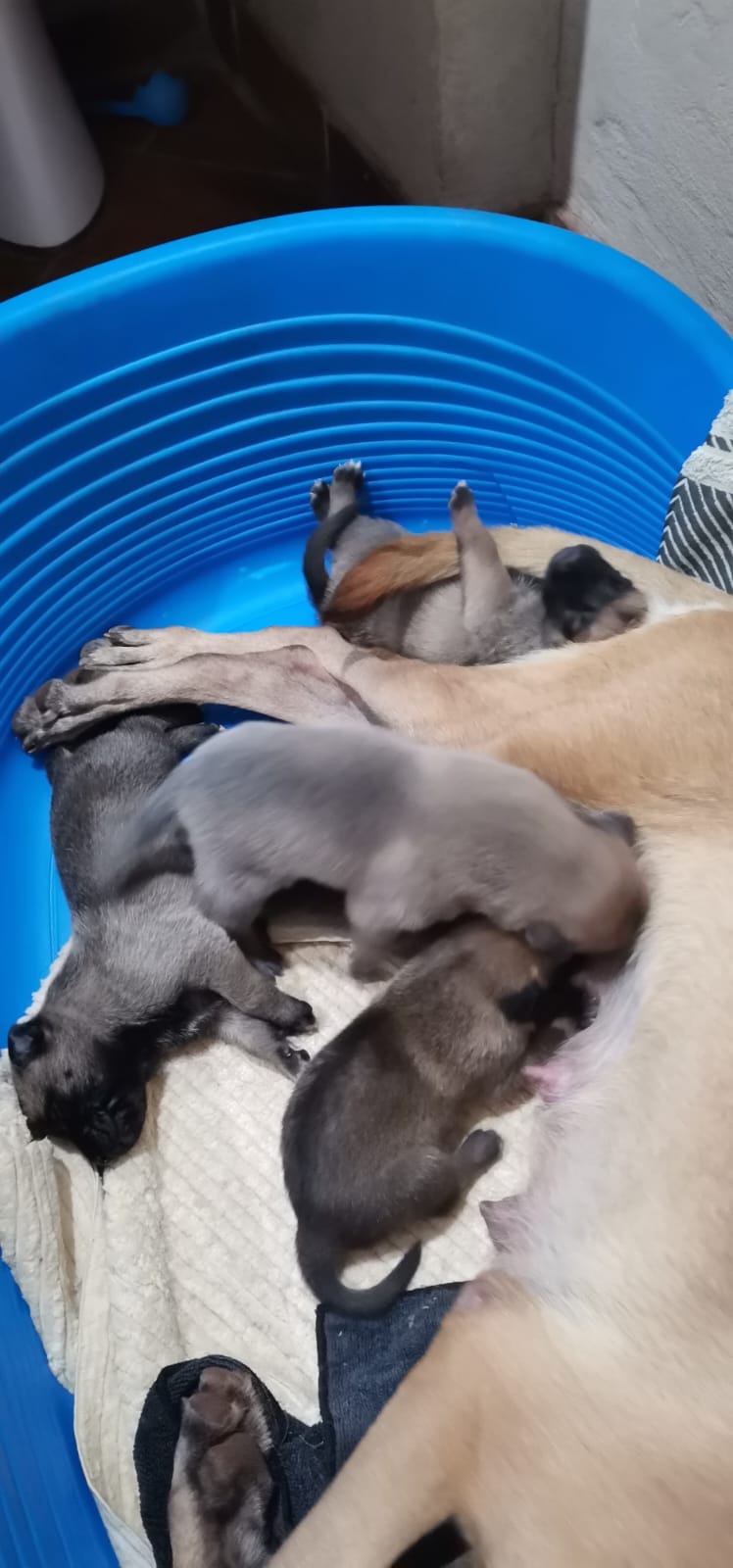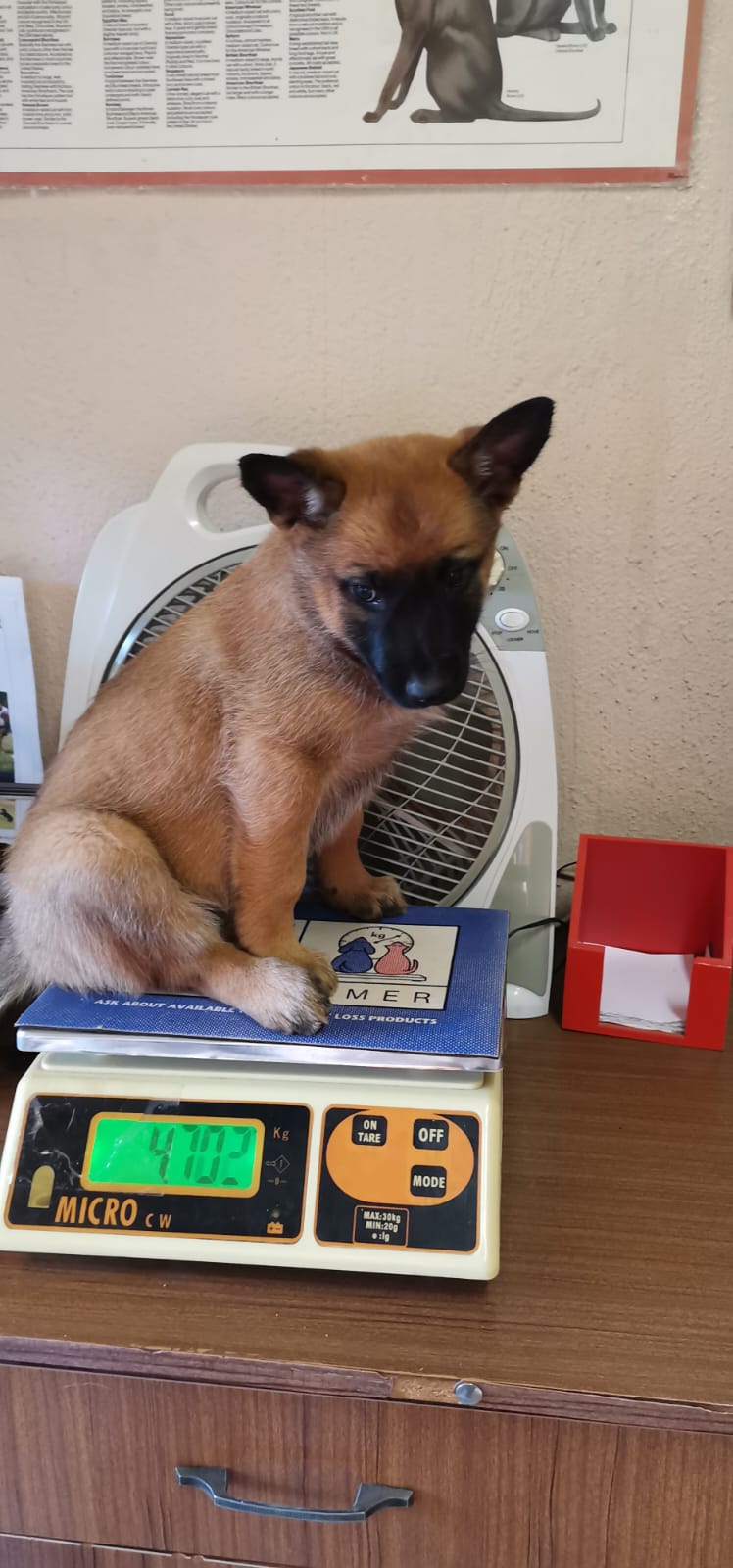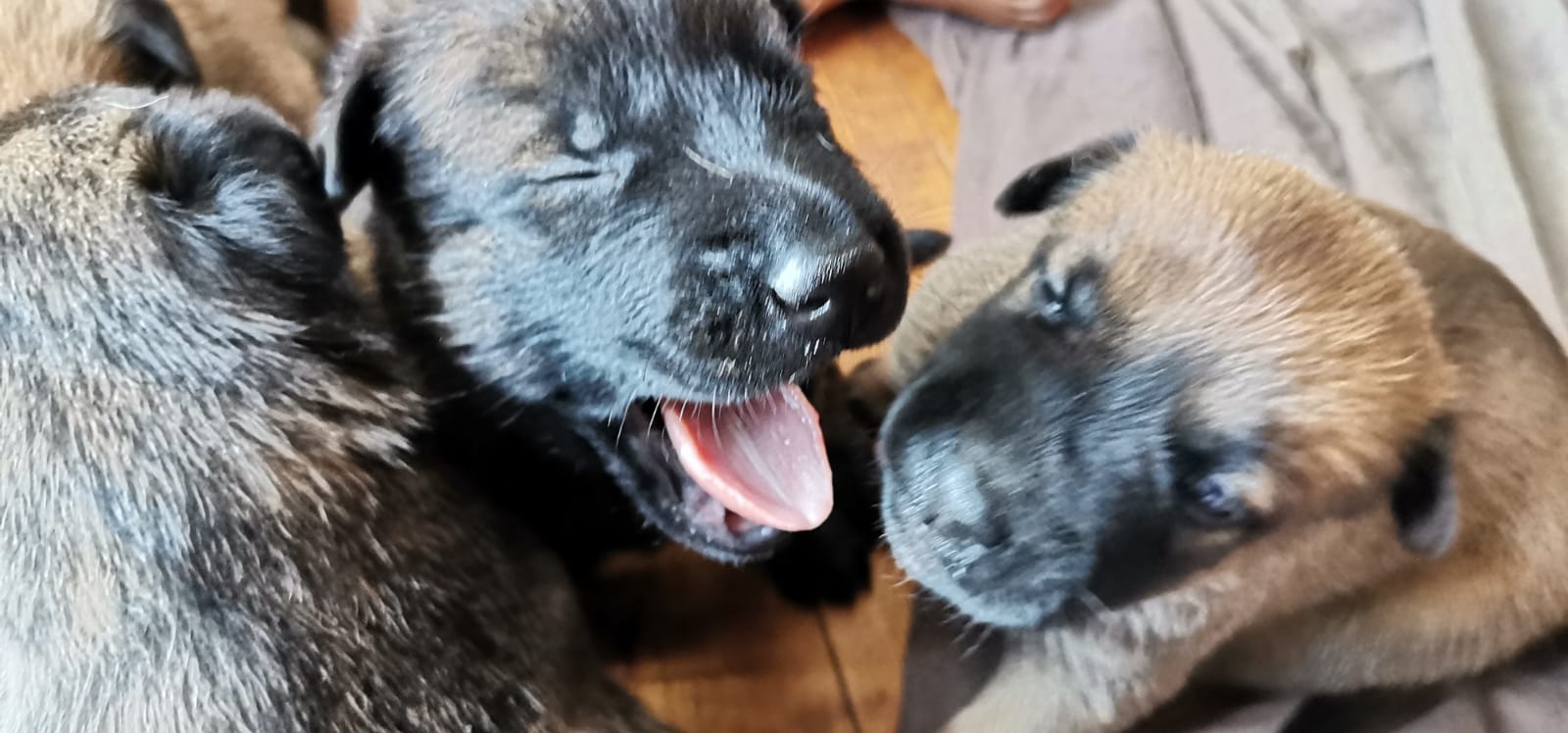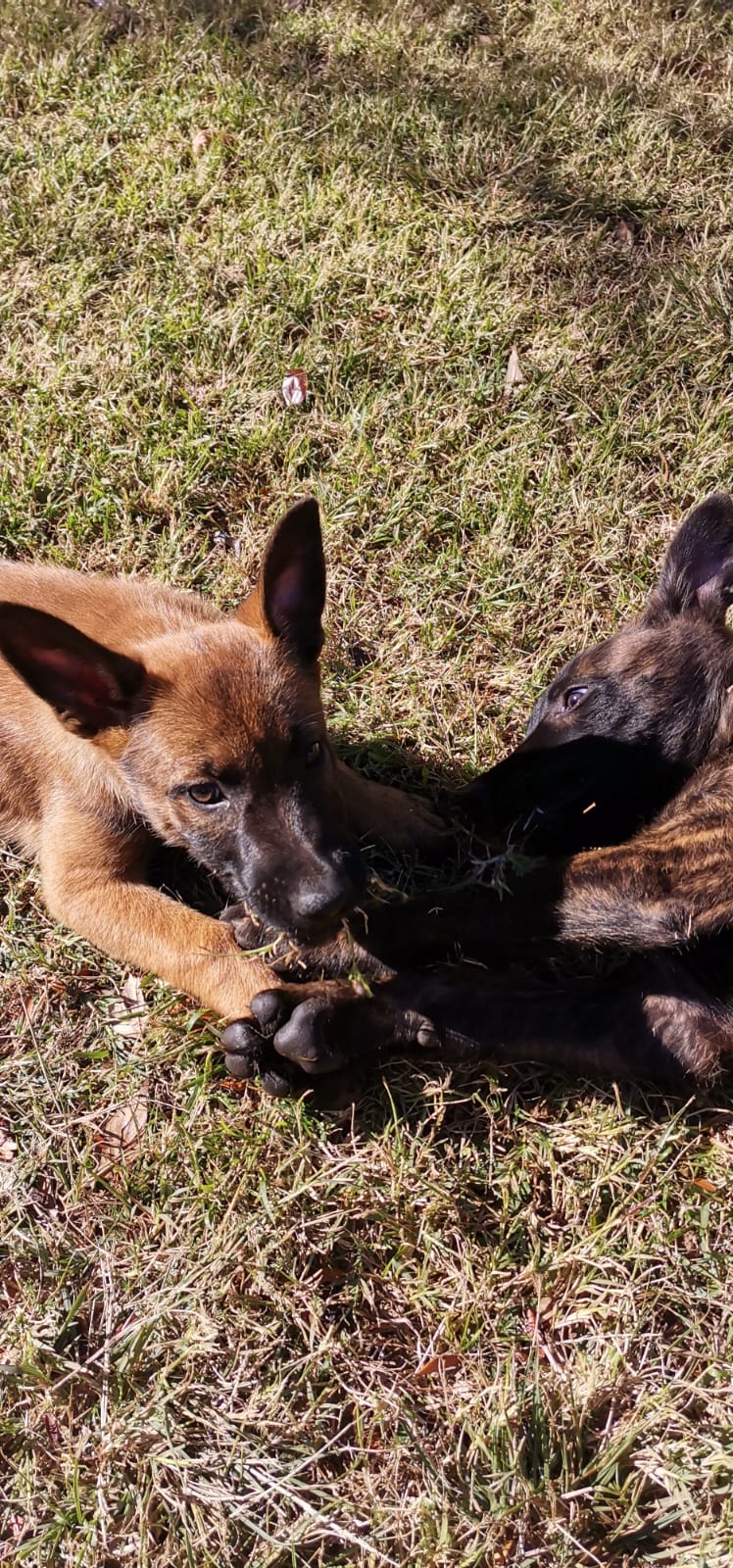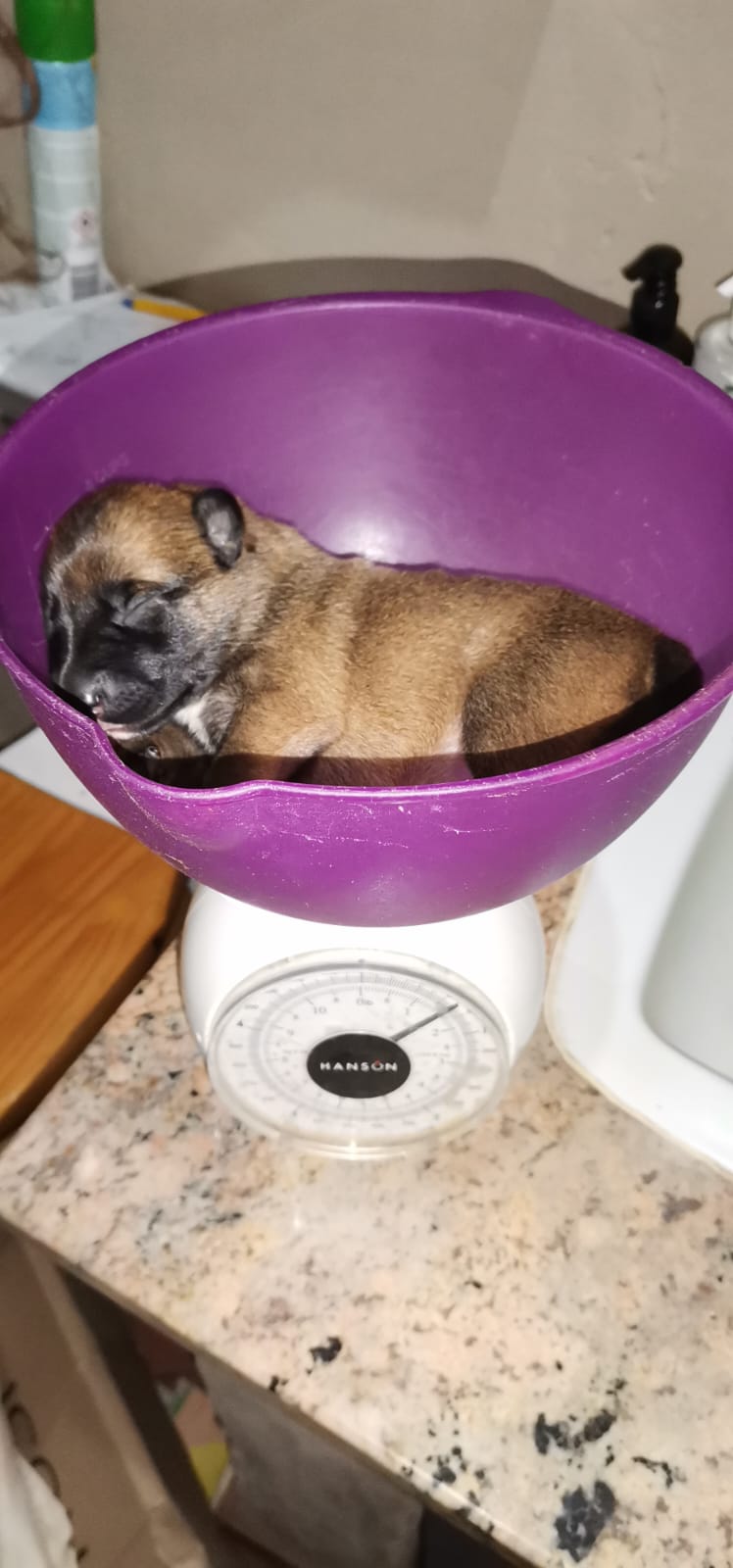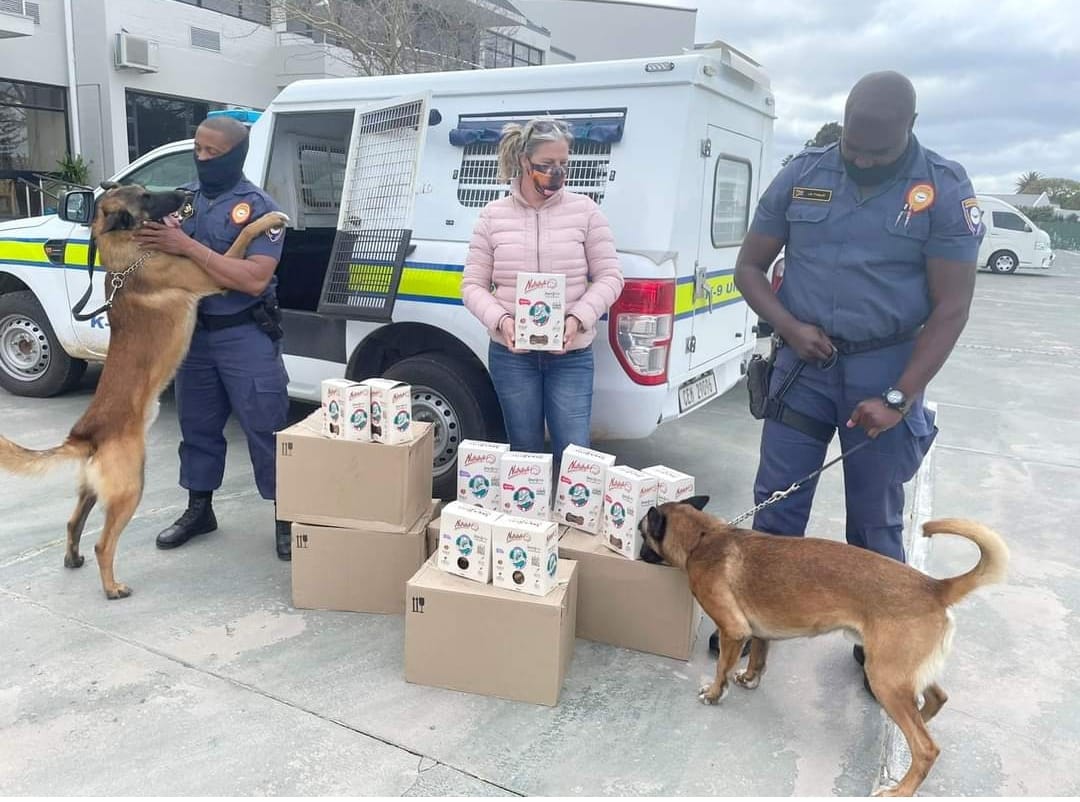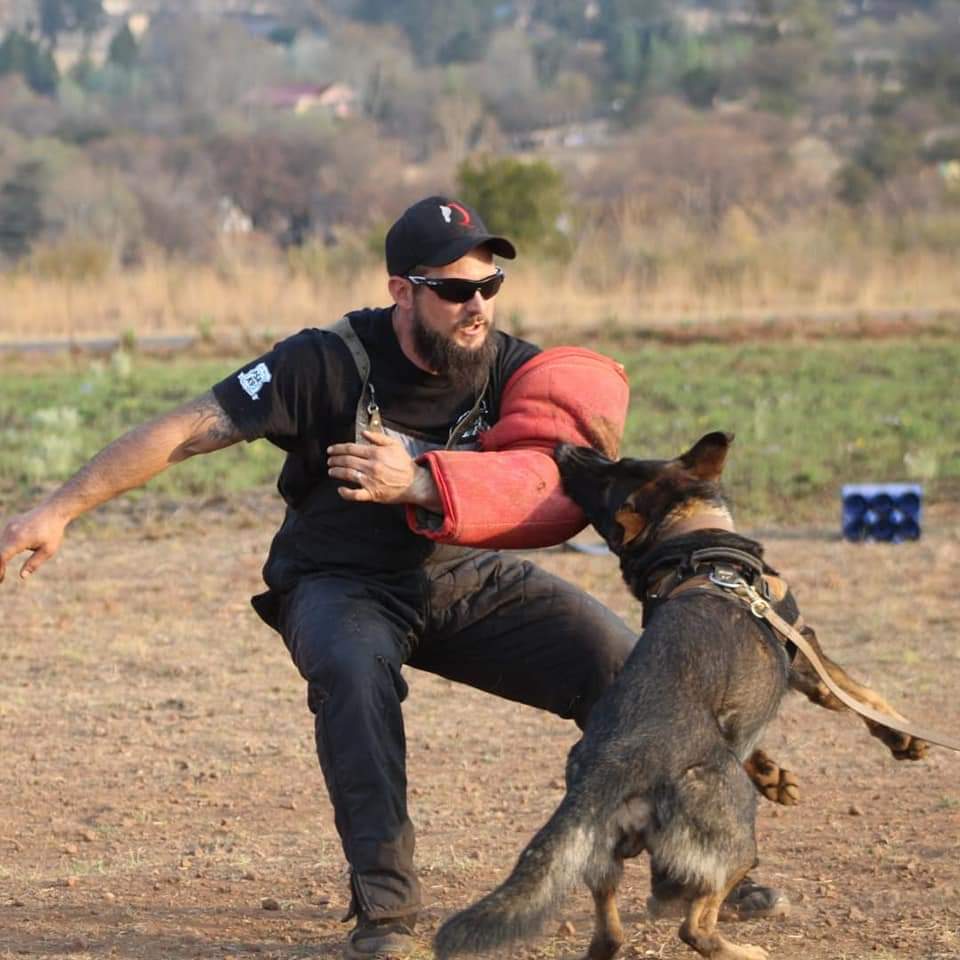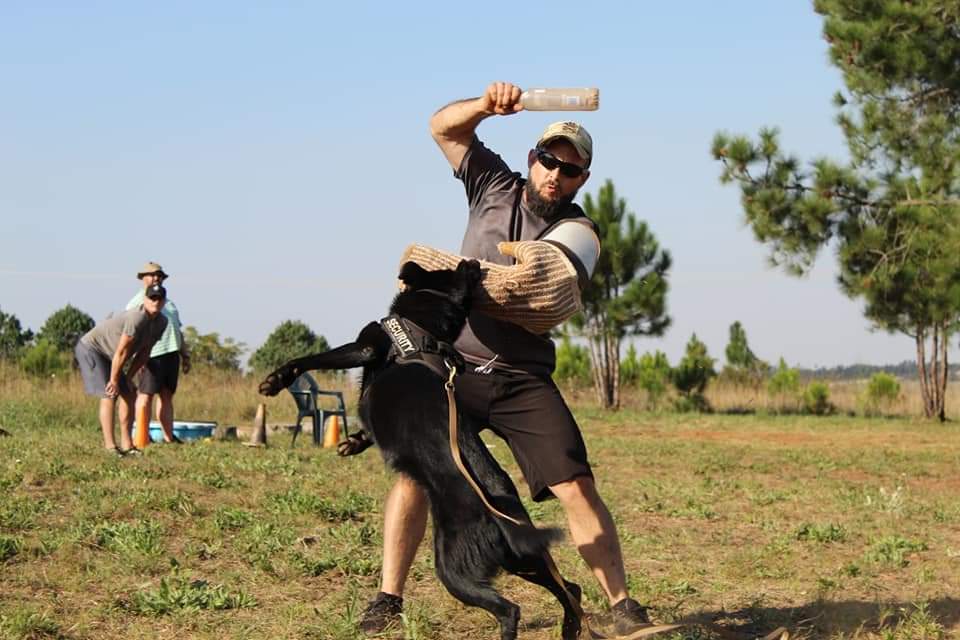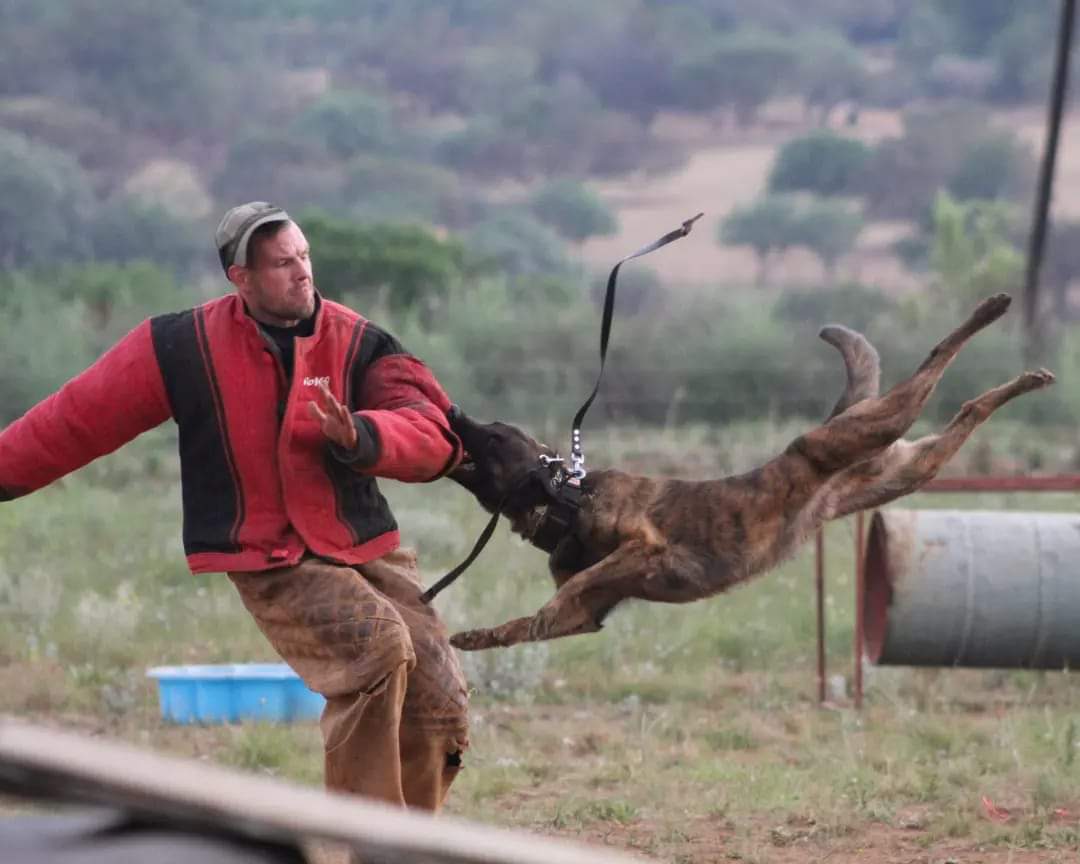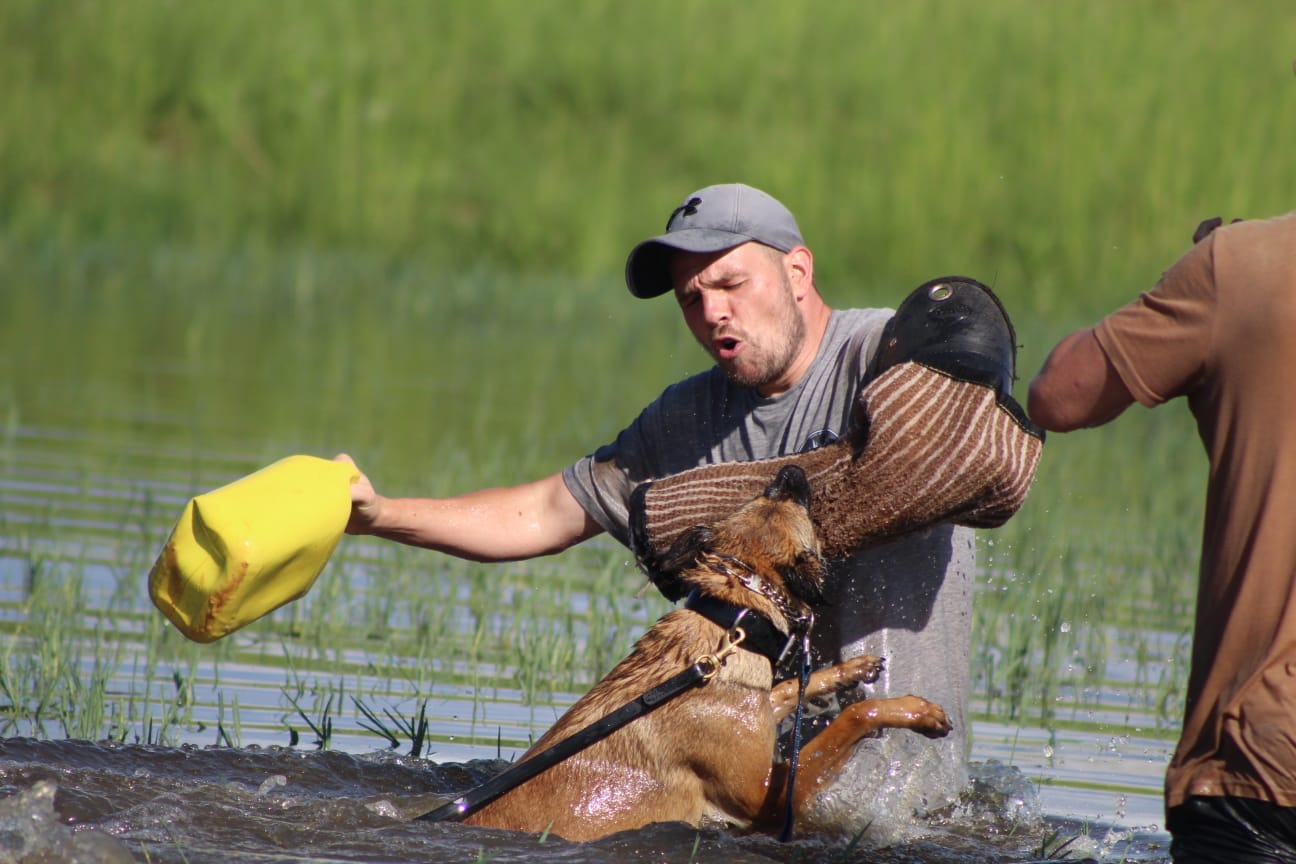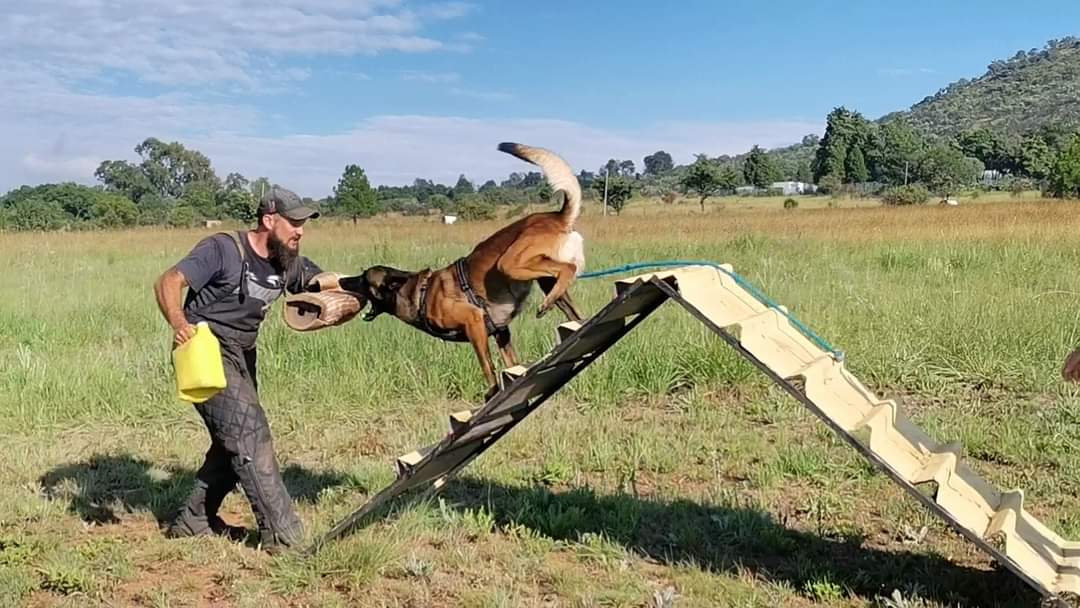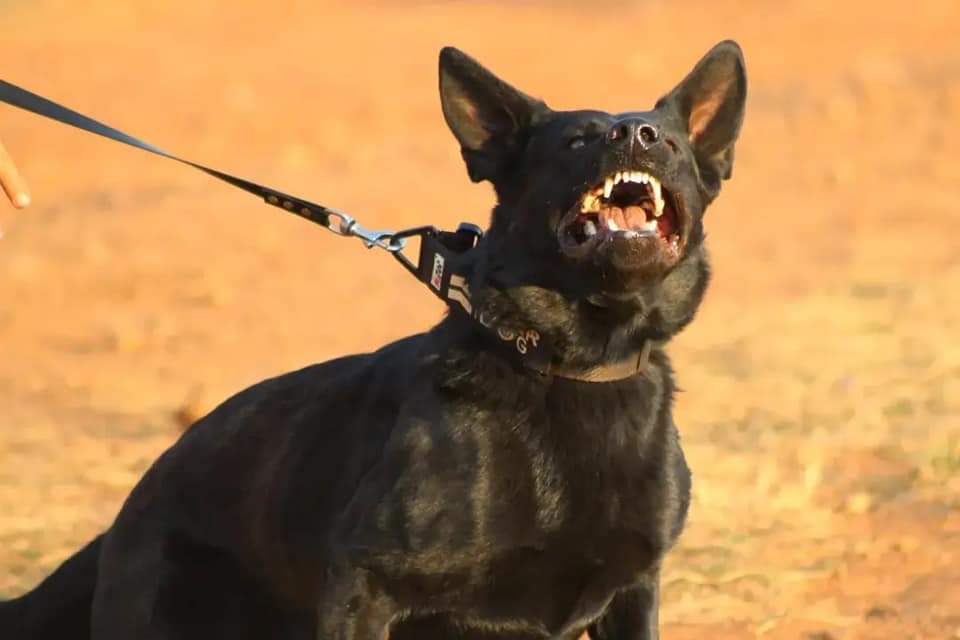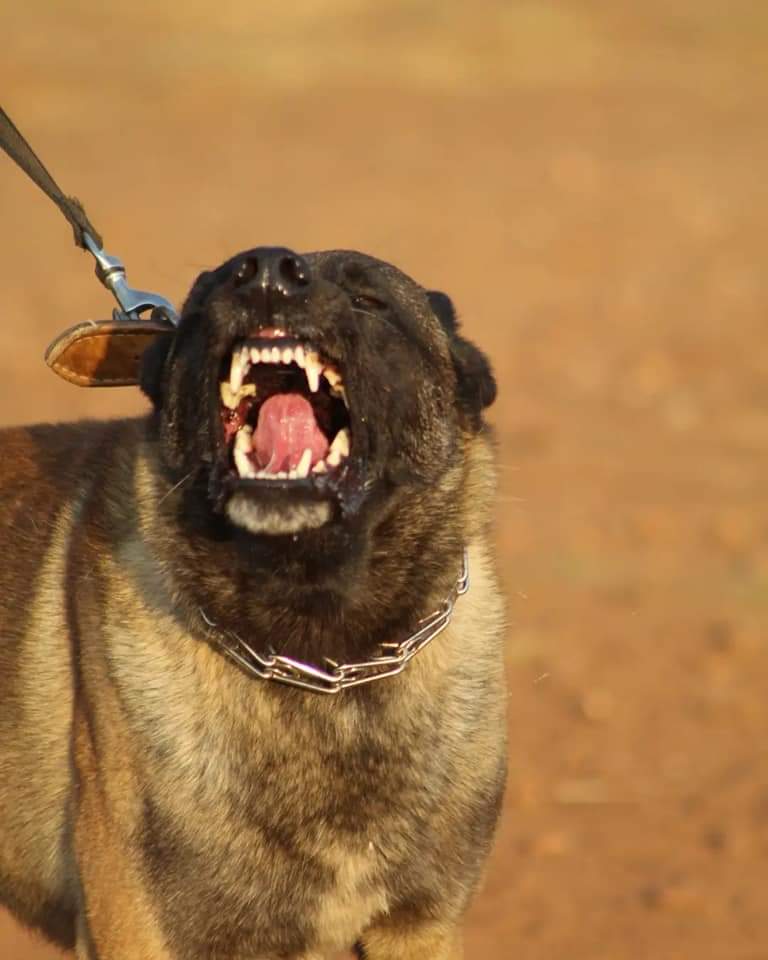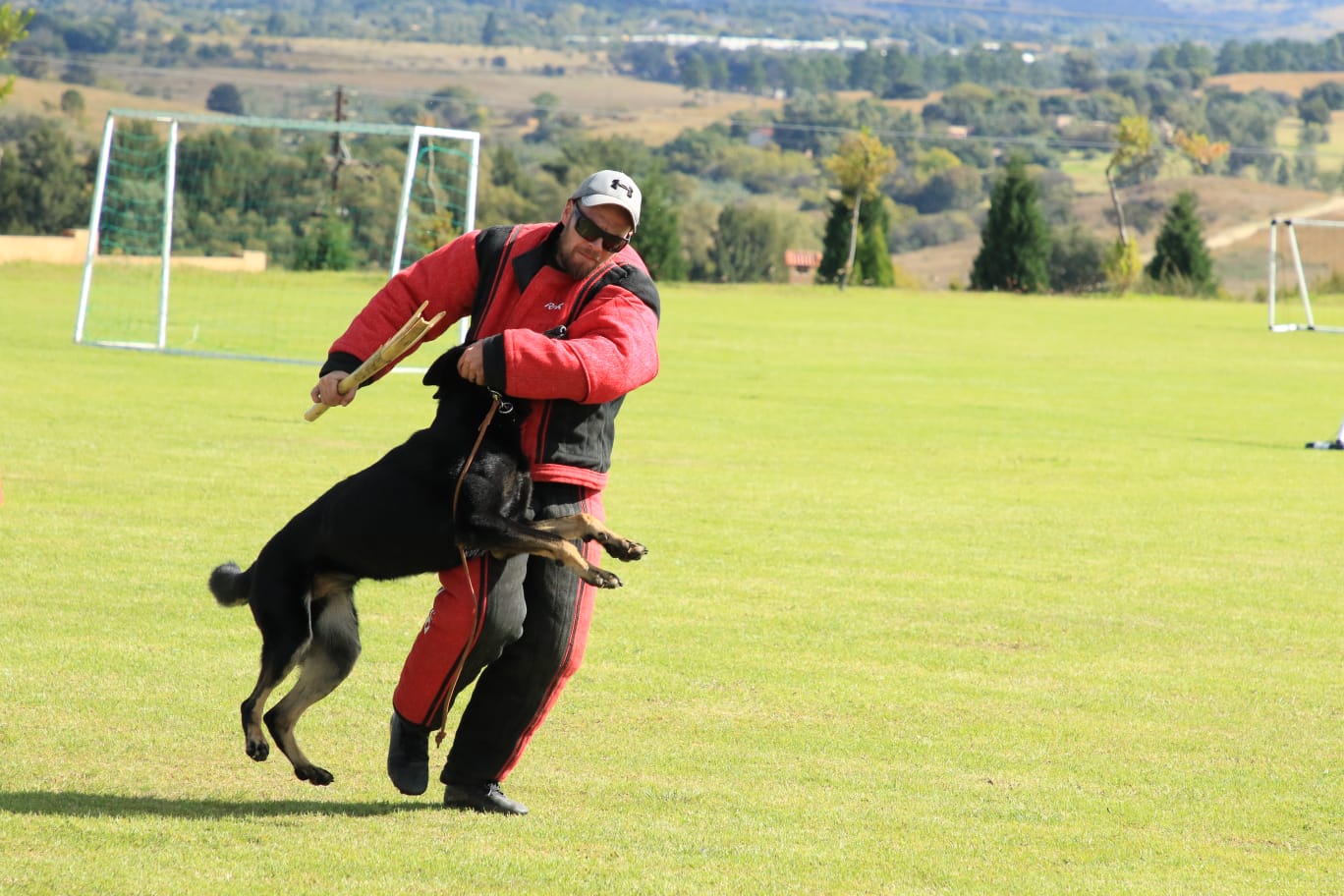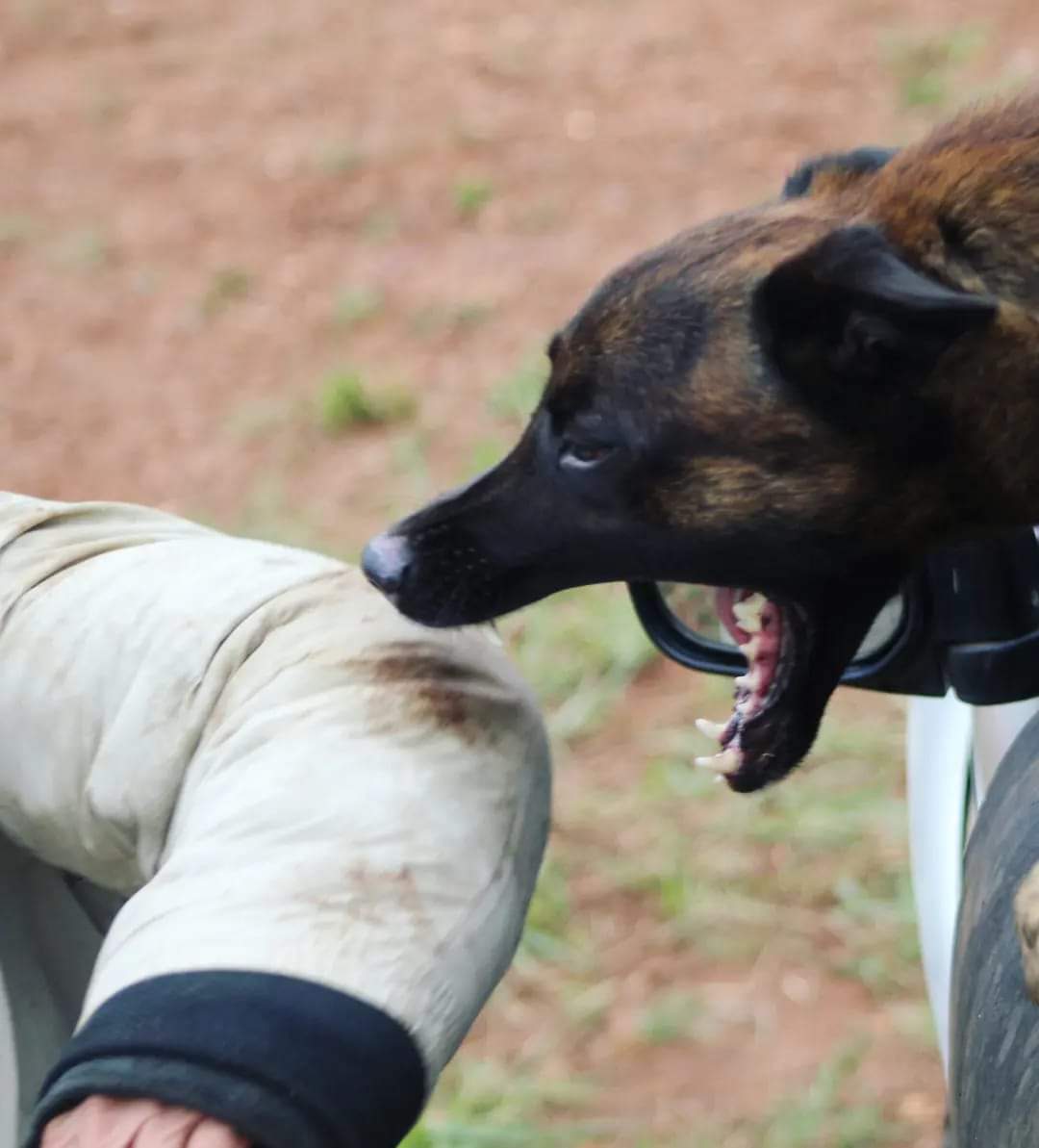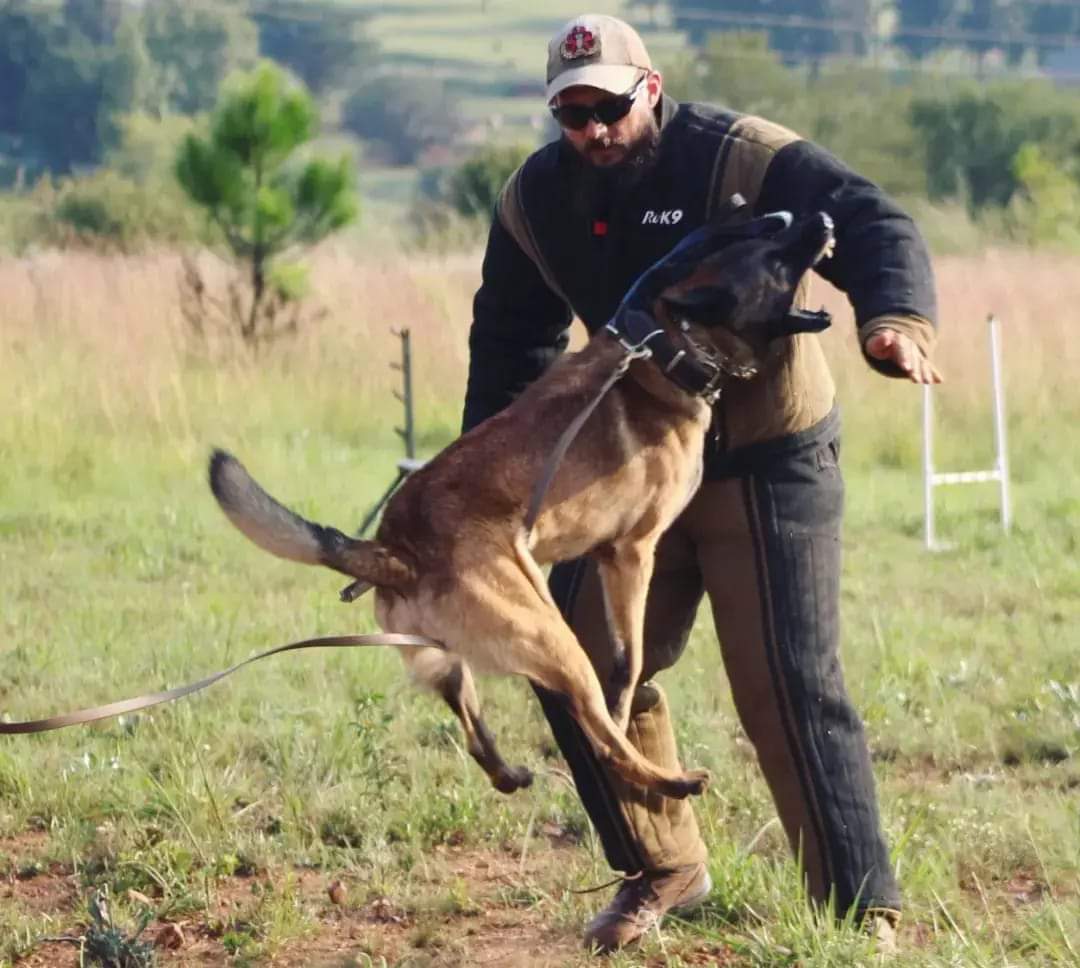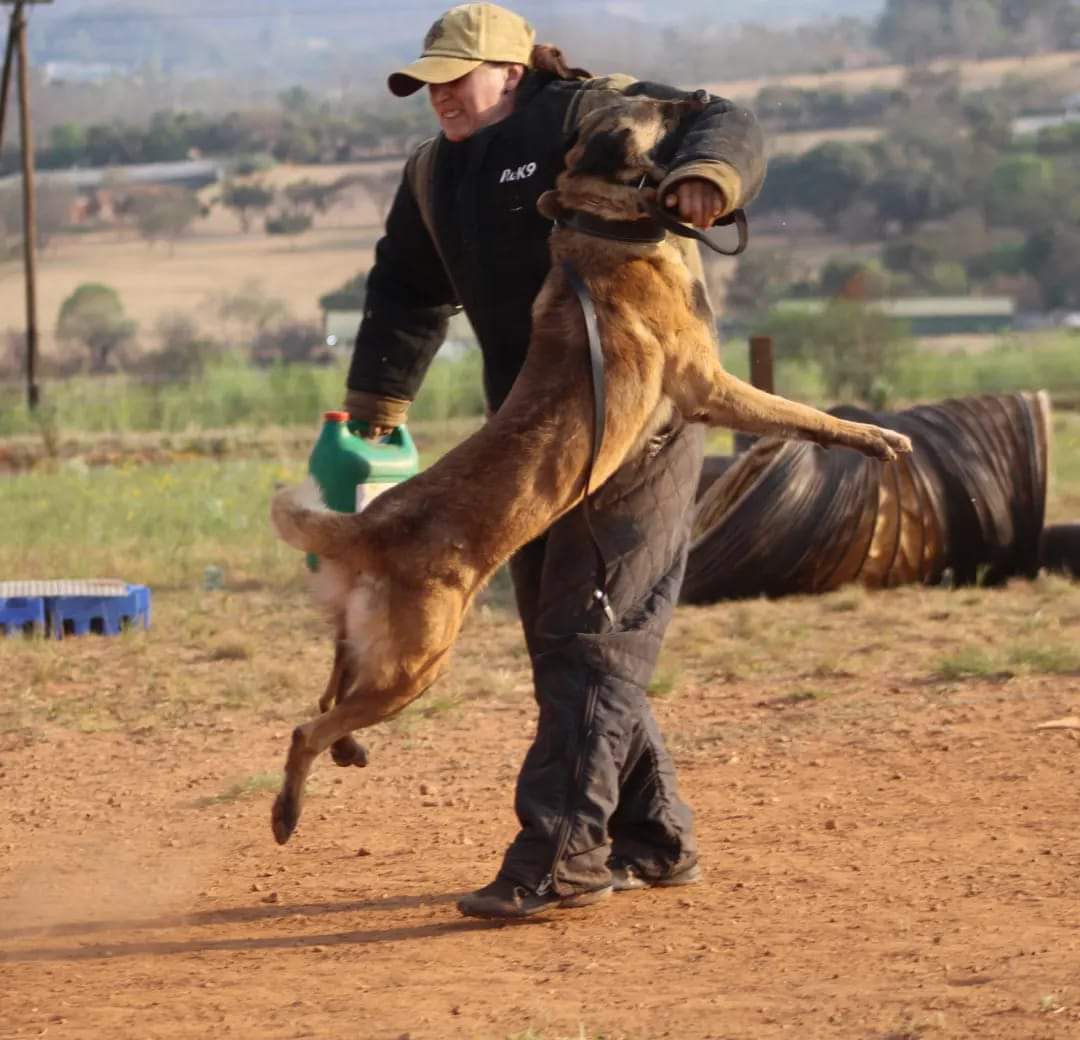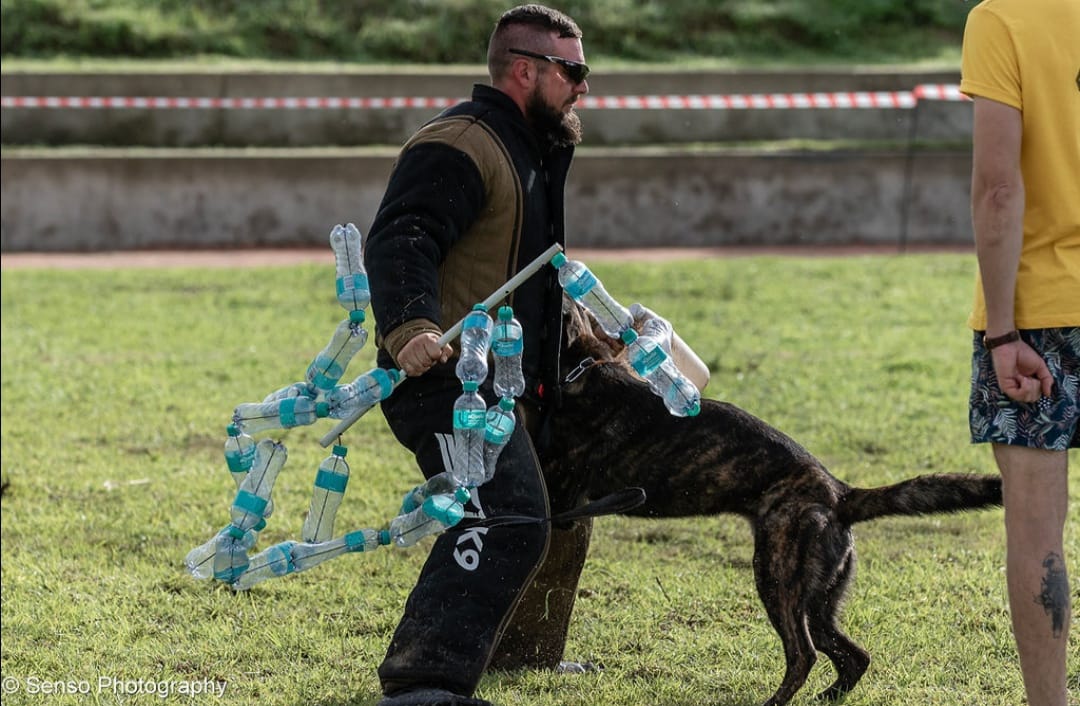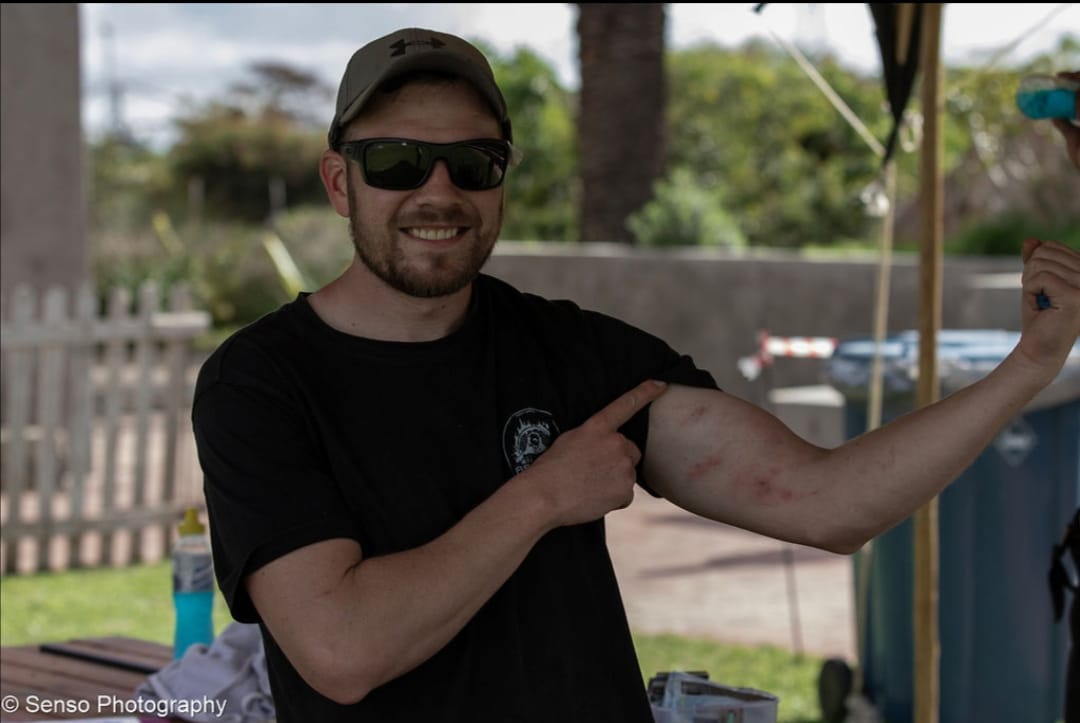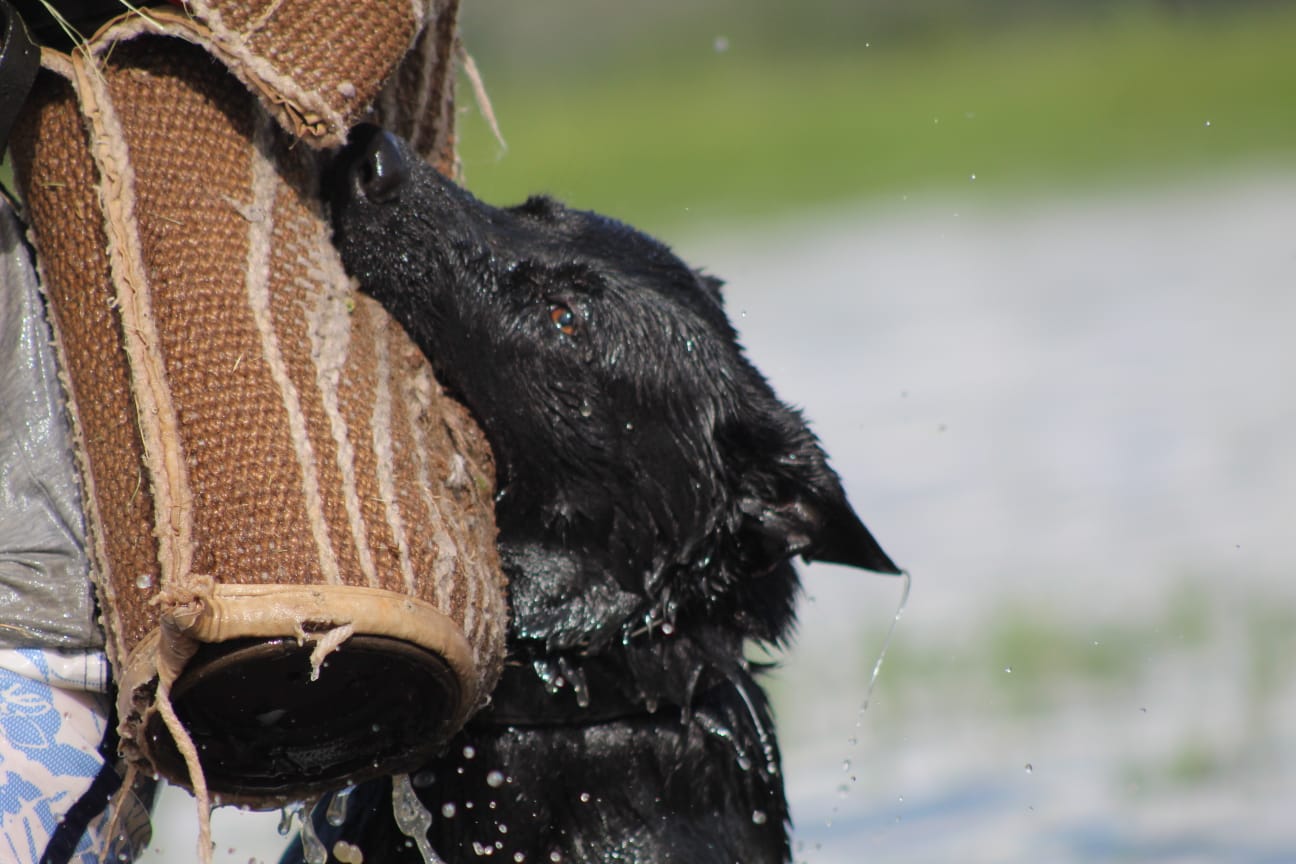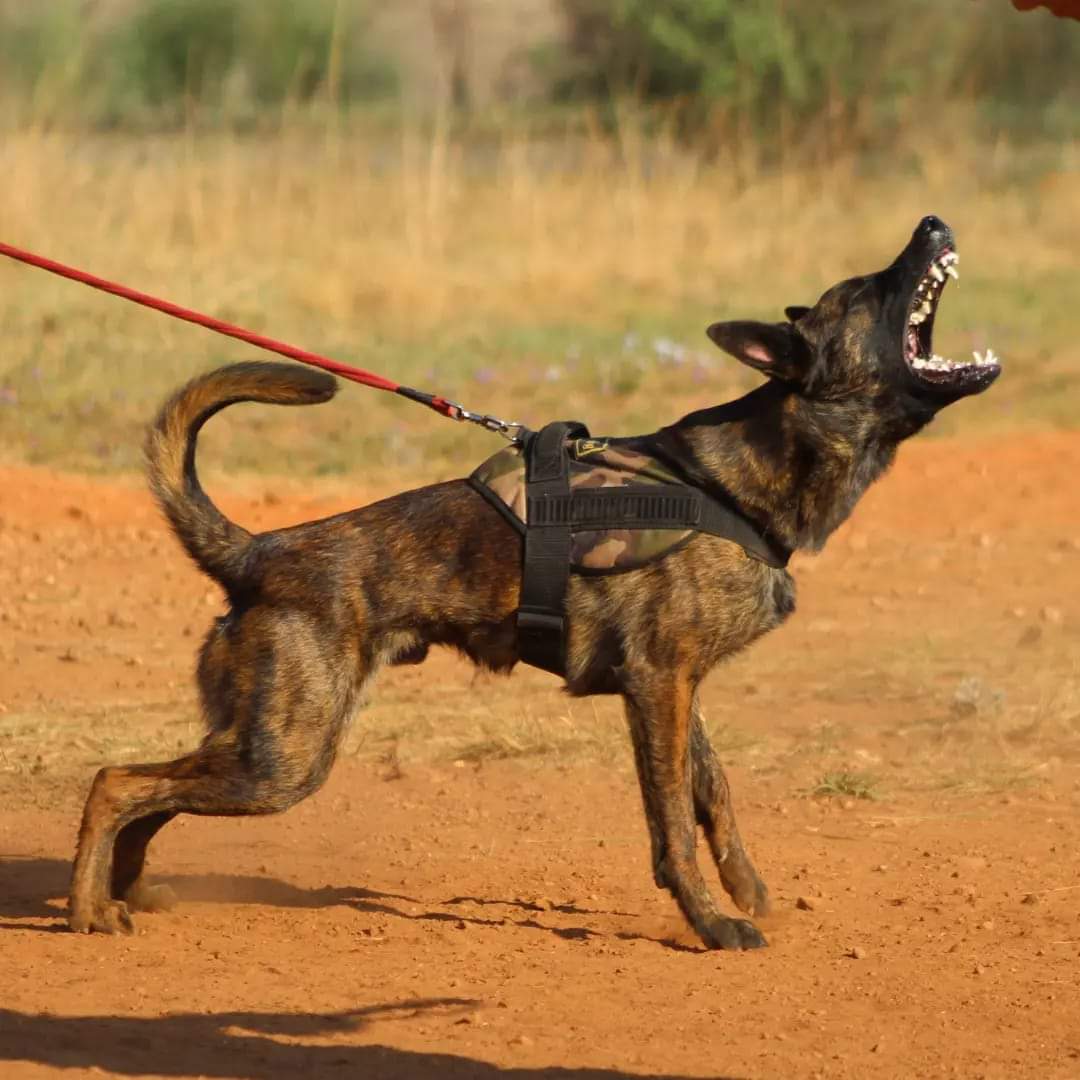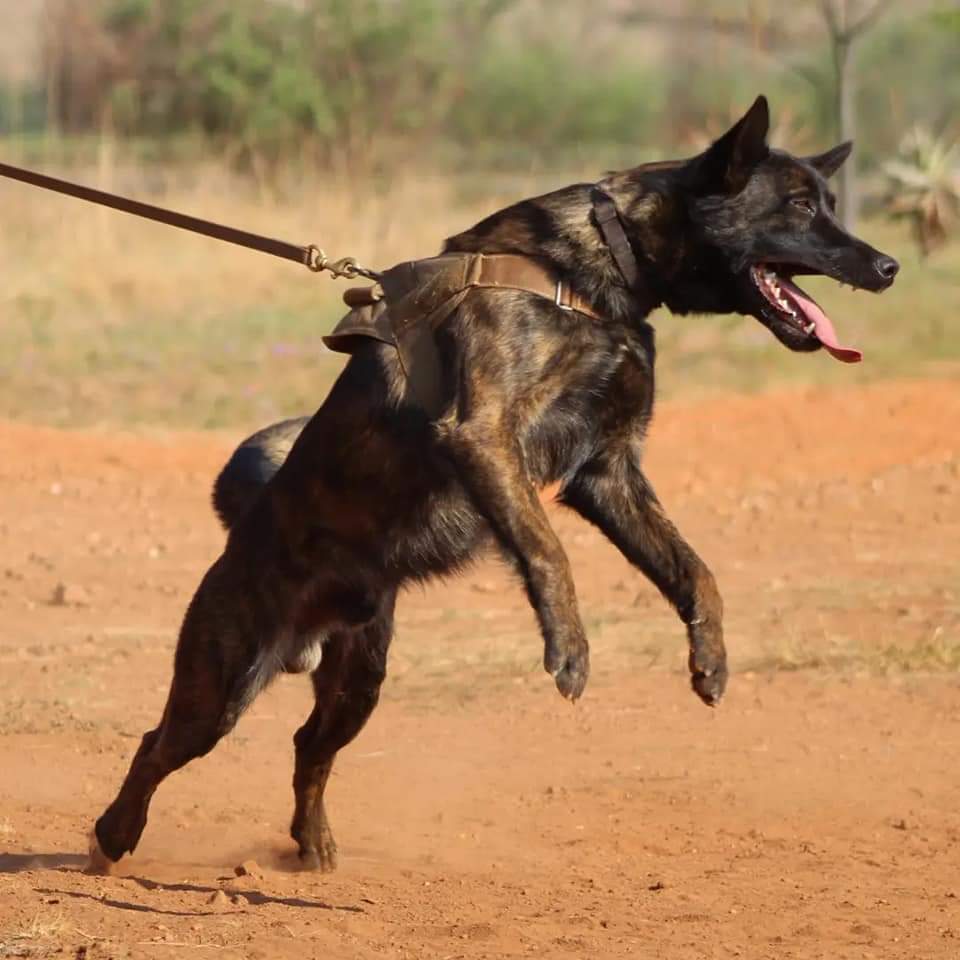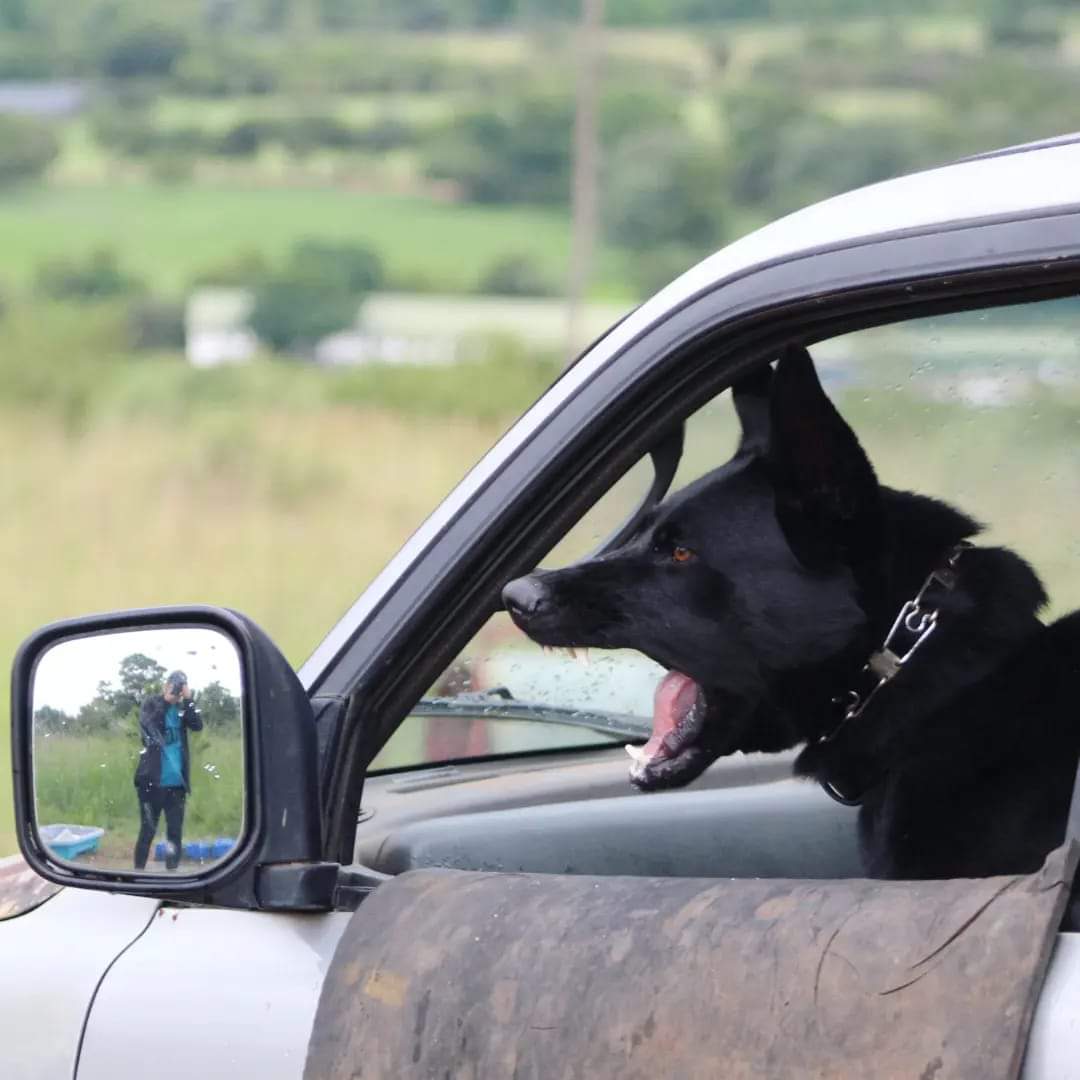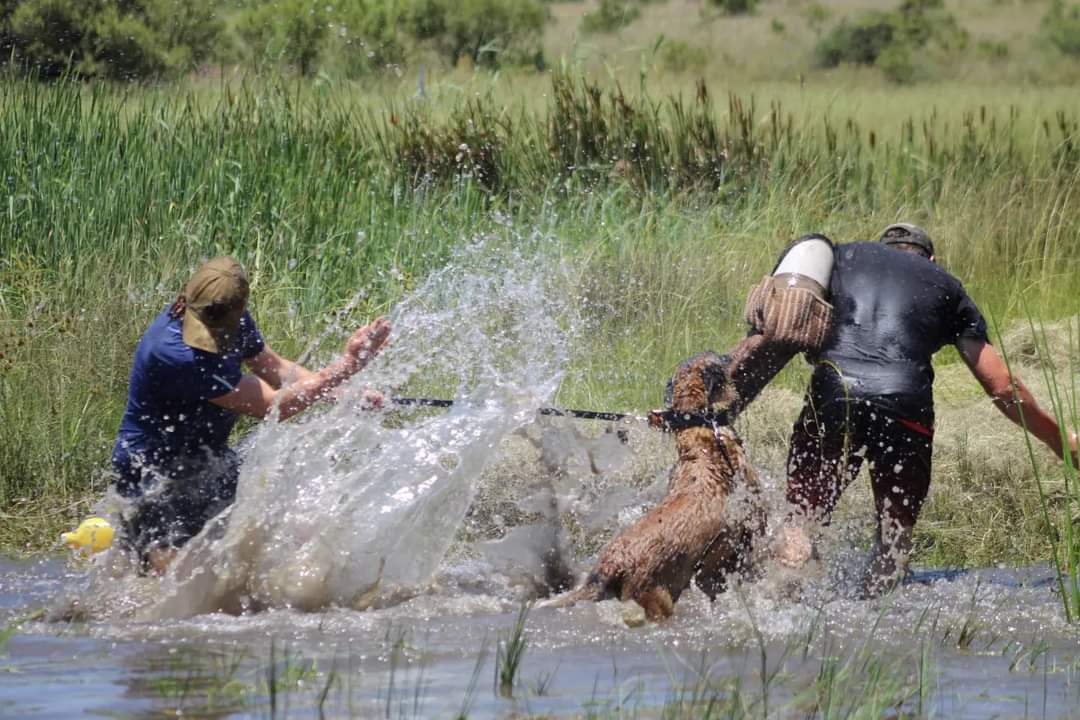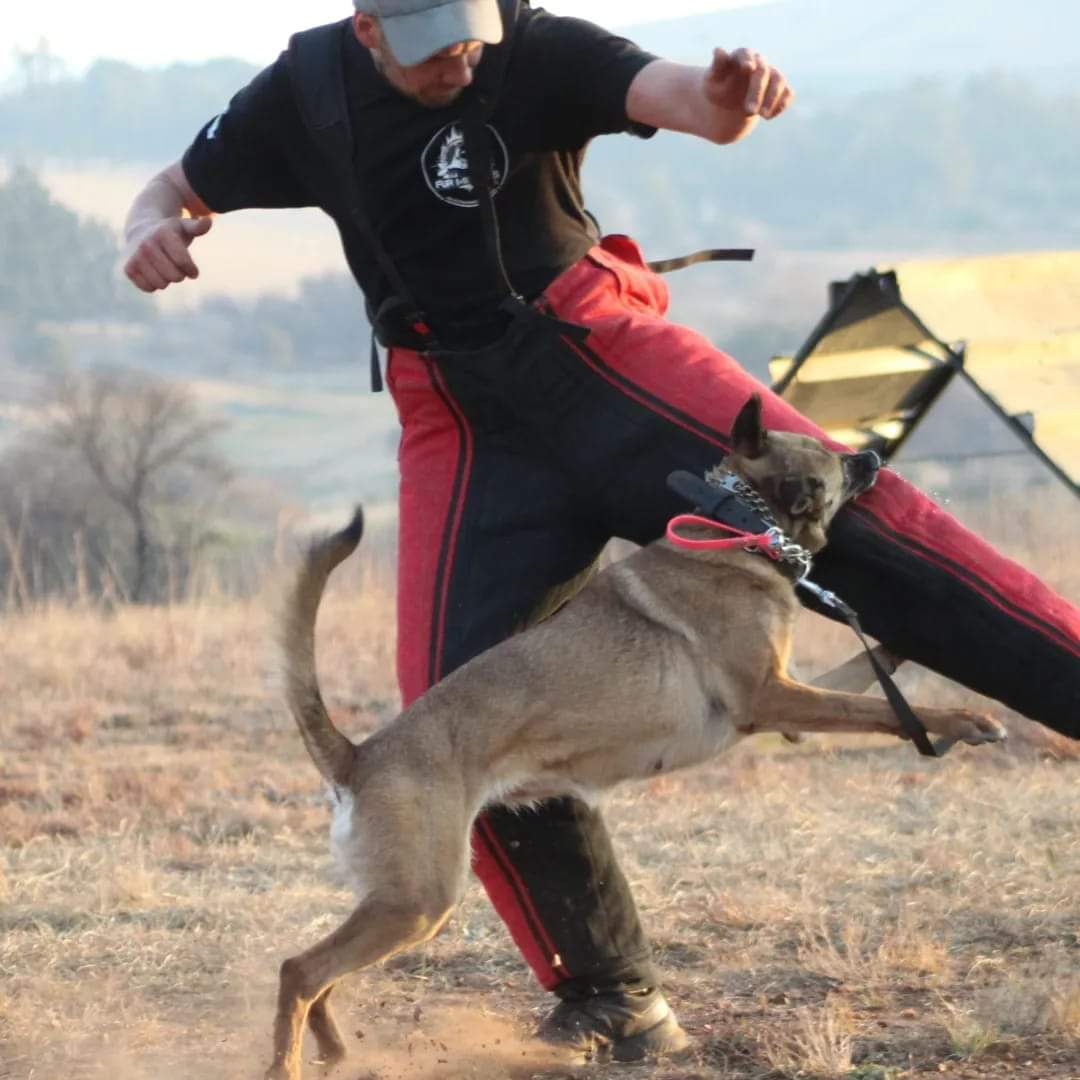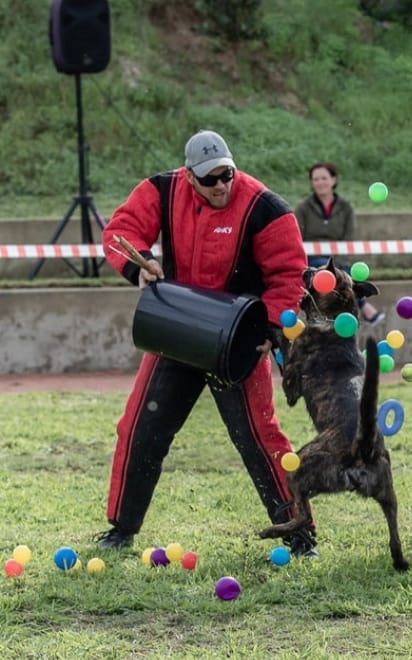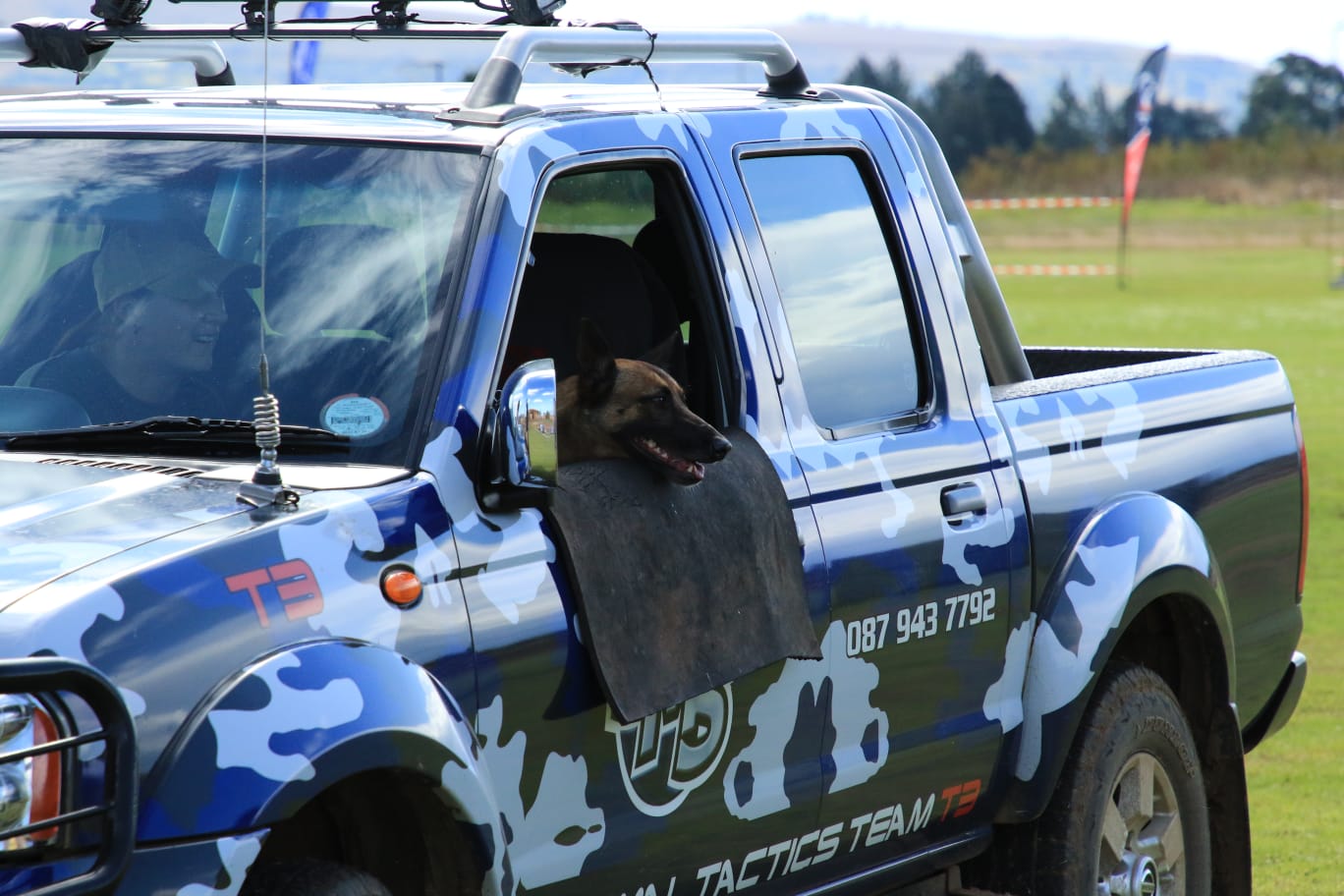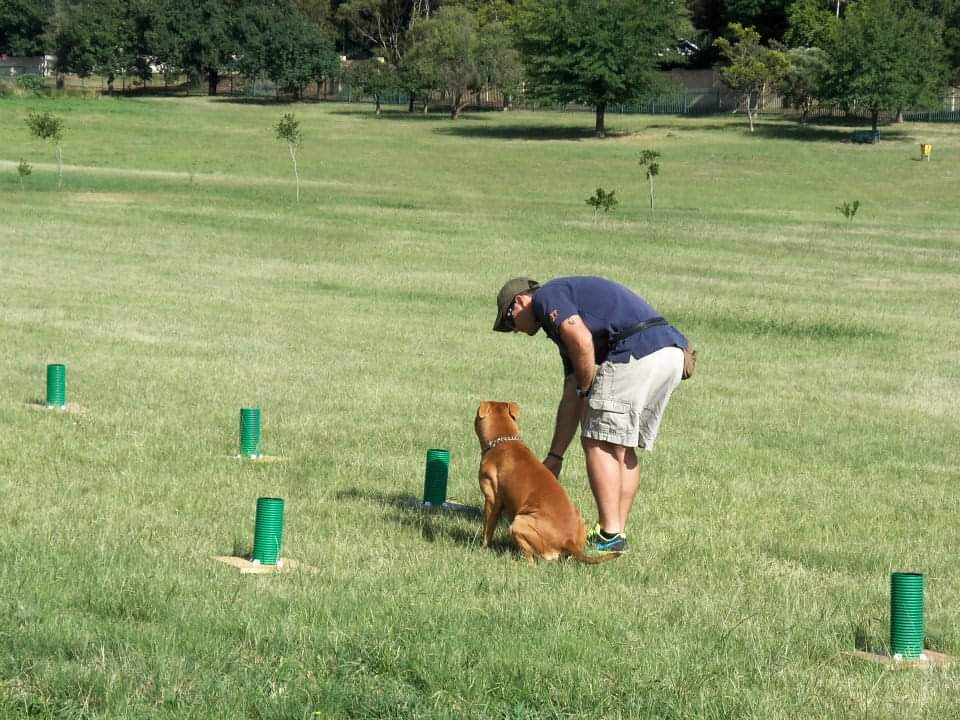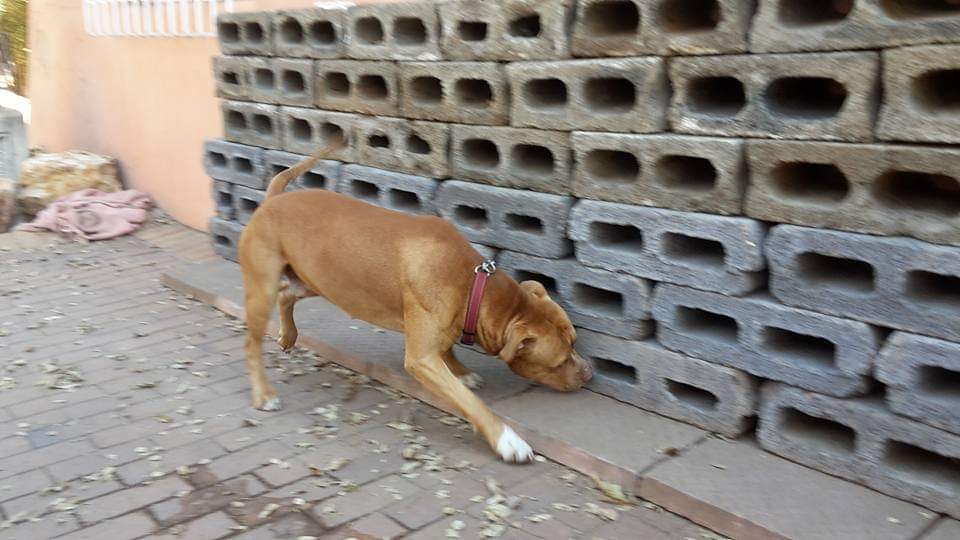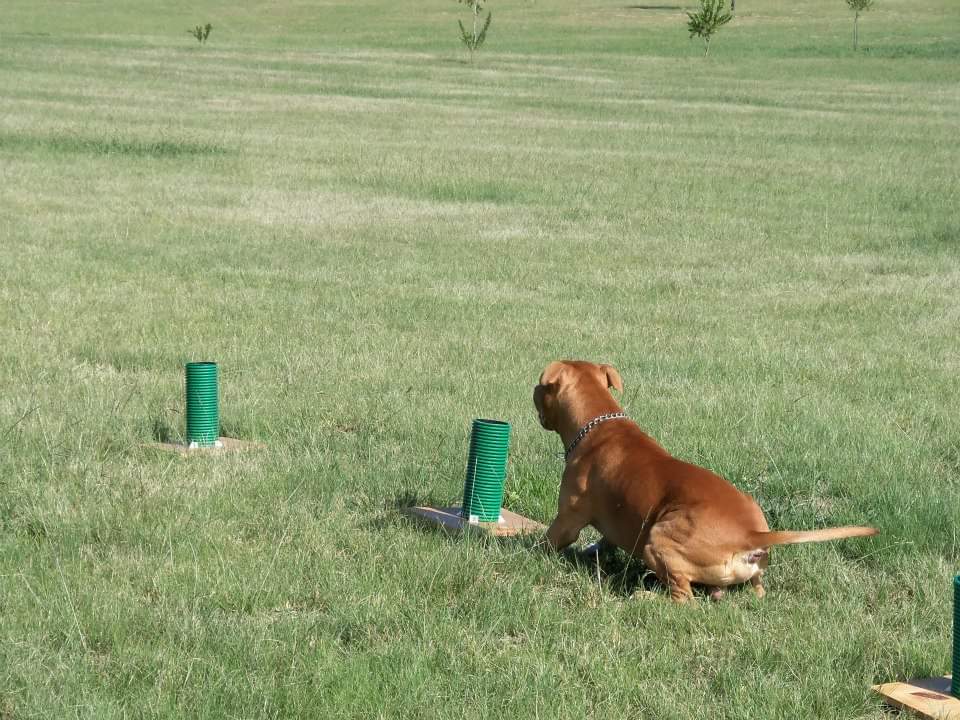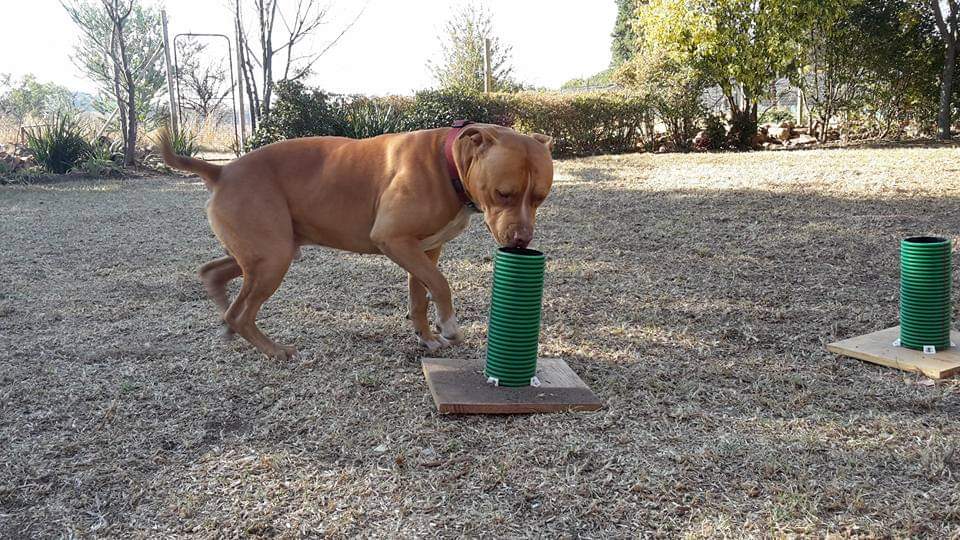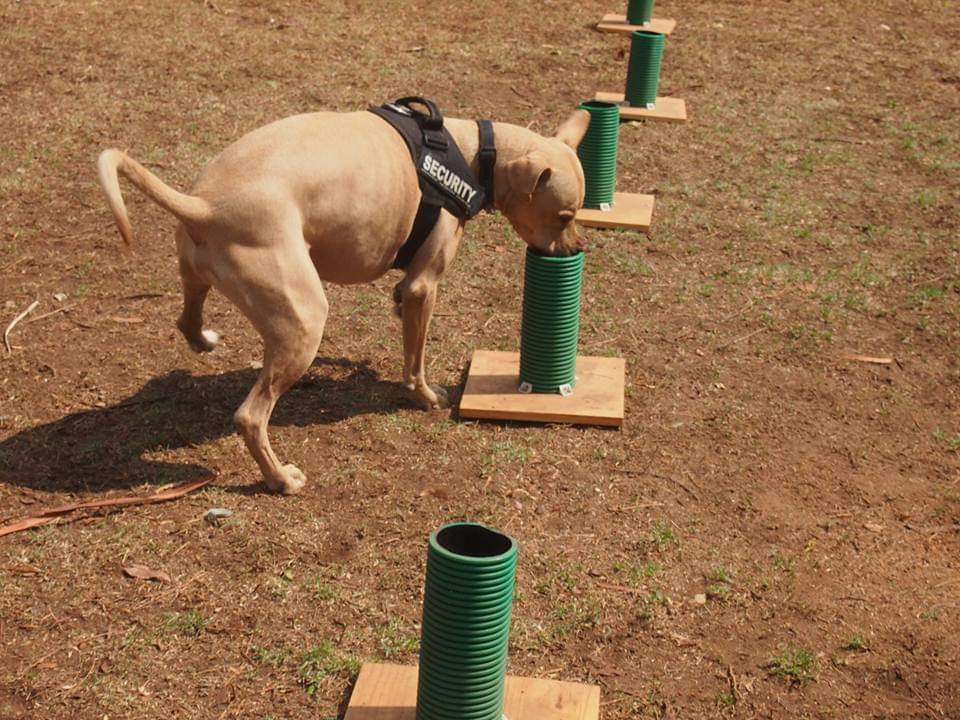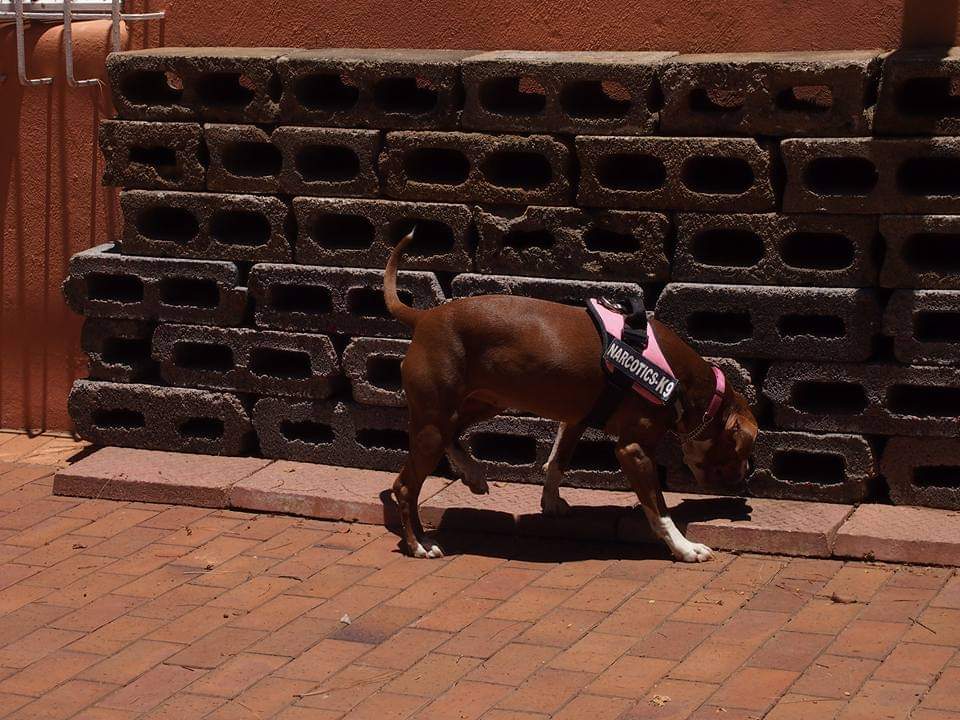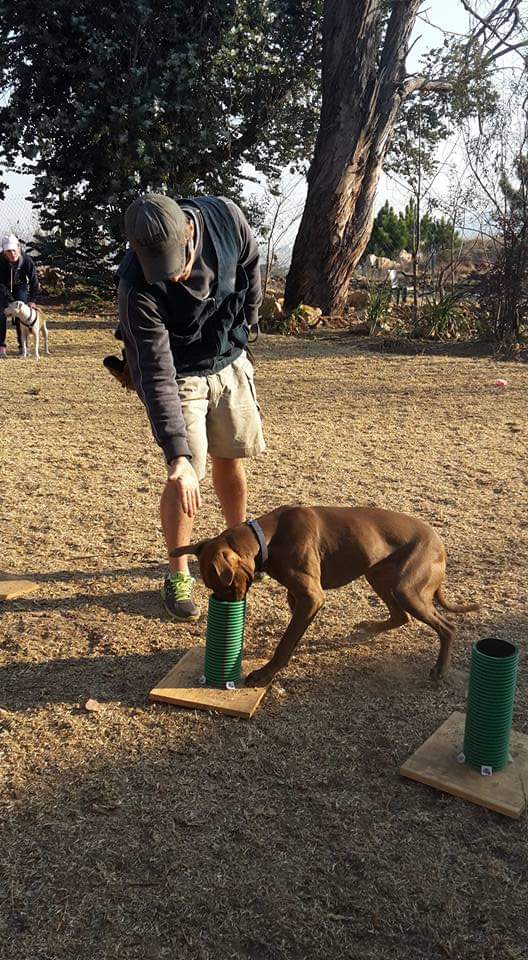K9 obedience training refers to the process of teaching K9s to respond to commands and to perform specific behaviours on cue. The aim of K9 obedience is to establish clear communication between the K9 and its handler, ensuring that the K9 is able to follow instructions and perform desired behaviours in a variety of environments and situations. The K9 obedience involves in basic cues such as sit, down, heel, stay there are also more advanced obedience training such as agility, protection and much more. K9 obedience training is important not only for ensuring the safety and well-being of the K9 but also for building a strong bond between the K9 and handler. Regular training helps to improve the K9s behaviour, reduce stress, enhance their quality of health but also for the working environment K9 obedience is a crucial part of the well-being and safety of people.
About Us
Our Training facility is situated in the heart of the cradle surrounded by the Swartkops mountain and wild life, Muldersdrift Johannesburg.
AVK9 offers a wide variety of training facilities that are tailor made for each individual, from basic obedience to advanced protection and detection work.
The training takes place on site or at one of our prefered locations within the surrounding areas. We offer one on one training or group sessions depending on what the client requires.
Certifications
PAPA licenced
PSIRA - 17930510
KUSA - 1042318
Our Trainers
Sharron Francisco
Trainer, Behaviorist and Kennel Master
Sharron is the Co-owner of AVK9 group established 2012. Sharron is the head Trainer at AVK9 training school and facilitates all the classes in basic and advanced obedience, agility and cognition.
She is a qualified 3rd year behavioral practioner and studied at Ethology K9 behavioral academy under Dr Slabbert and Dr Hurley. During this time she was working as a vets assistant for over 10 years.
Sharron runs and managers the AVK9 kennels and the breeding program.
Joshua Francisco
Head Decoy and Trainer
Joshua Michael Francisco- co owner, and head trainer at AVK9 since 2012, he has more than 15 years experience in the K9 working industry.
Started at Johannesburg Metro Police Department K9 Academy and has completed dh1-5 explosive and narcotics.
Worked in various locations in Johannesburg CBD for pvt security company aswell as the 2010 world cup stadium searches.
With multiple dh5 courses completed over the years and around the world.
He has worked in
- Afghanistan for over a year as a patrol explosives detection handler.
- Involved with the set up and running as head trainer and supervisor for a year and a half at RAPS K9 unit at OR Tambo International Airport.
- Worked for 2 and a half years in Iraq Ramadi/Mosul as a improvised explosive detection handler on a humanitarian contract removing ieds from crucial infustructure in restoring these cities.
- Managed and ran SMS security High-risk K9 unit in the Muldersdrift area for 2 years
Rozlyn Francisco
Trainer
Rozlyn Janel Francisco is a K9 Trainer at AVK9, she has 10 years experience working with k9s, she started as a K9 handler at OR Tambo International Airport for a company called RAPS as a explosive detection K9 handler.
She is DH5 qualified from Genesis K9 group. Rozlyn started working as a K9 trainer with AVK9 school in 2014.
She is the head obedience trainer for the Protection Sport Club Furmissiles established in 2018.
She has experience working in the field with K9's for security companies MVD and SMS Security.
Sean Morris
Trainer and decoy
Sean Gratton Morris is a k9 trainer at AVK9, he has over 6 years of experience working with K9s he has experience working in the field with K9s for security companies MVD and SMS.
He is an internationally certified decoy for PSA and has certified twice.
Services
Detection
Explosives
Narcotics
Tracking
Protection
Personal protection
PSA
Play/Prey drive
Training
Obedience
Cognition
Socialising
Breeding
Whelping
Green dogs
Other
Assessments
Inboard training
Kennelling
More information
Cognition refers to the mental process involved in acquiring, processing, and utilizing information. In K9s the cognitive process such as attention, memory, perception and reasoning play an important role in their ability to interact with their environment, learn new behaviours and understand and respond to handler and cue given. The k9 cognition is shaped by both nature (genetics) and nurture ( environmental early experiences, socialisation and training) and can be influenced by factors such as age, breed and health status.
Agility is a way in which K9s navigates their way through obstacles while been guided by their handlers. Agility tests a K9s speed, coordination, balance and focus as well as the ability to follow cues while working together with the handler. Its a way to promote physical stimulation, mental stimulation, and bonding.
K9 socialisation is the process of teaching a K9 to interact with people, animals, and various environments in a positive and confident manner. This is important for the overall well-being of the K9 and helps prevent behavioural problems. Effective socialisation should occur in puppies between 3 and 14 weeks of age and continue throughout the K9s life. Socialisation in the working line includes introducing the K9 to certain smells, sights, sounds, environments and experiences in a positive and controlled manner. This is based on reward-based training to encourage confident and appropriate behaviour.
K9s have an incredible and powerful sense of smell, which is estimated to be up to 100,000 times stronger than a humans sense of smell. This is due to their highly developed olfactory system which includes 220 million odour receptors in their noses. A K9 uses its sense of smell for finding food, detecting danger and locating owners. In the working K9 the sense of smell is used for finding narcotics, explosives, rescuing people and even huma remains
These K9s are a specialised trained K9. Their heightened sense of smell makes these K9s an asset in detecting and preventing illegal narcotic trafficking. They undergo extensive training to hone their sense of smell and to identify specific scents associated with various types of narcotics. These K9s are often used by law enforcement agents, airports, schools and other high-security areas in the prevention of spreading narcotics. The use of K9s trained for narcotics has proven highly effective in detecting narcotics. They play a crucial role in the fight against narcotic trafficking and abuse.
Tracking with a K9 involves a K9 to follow a specific scent or trail left by a person or object. The K9 is trained to use their high sense of smell to locate and follow the scent until it reaches the source. The handler is trained how to read the K9s posture and to follow the K9 to the target where the K9 will indicate that they have found the source. K9 tracking is useful in locating missing persons, rescue operations and criminal investigations. This requires a strong bond between handler and K9 and an ongoing training program to maintain the K9s skill and accuracy.
K9s have been trained to detect explosives and used by law agencies as well as the military for this purpose. Their keen sense of smell is used to detect the odour of explosive material that are not visible to the human eye. This allows them to quickly and efficiently search for potential explosive devices in a wide range of environments including airports, public transportation, clearing of areas after war, sports events and other high-risk areas. The K9s are taught to give a specific response when they detect an odour, alerting their handler to the presence of the dangerous material. The use of K9s detecting explosives has proven an effective and reliable method for detecting and preventing acts of terrorism and other security threats.
Prey drive refers to a K9 and their natural instinctual motivation to chase and capture moving objects. Animals or toys that simulate prey in the wild. It is often demonstrated through play behaviour and is an innate drive present in many breeds but can vary in intensity between K9s. Play drive refers to a K9s inclination to engage in interactive and playful activities, such as fetch, tug of war, and other games. Play behaviour helps to strengthen the bond between k9 and owner, provides mental and physical stimulation and can be used as a training tool. Both prey and play drive can be harnessed and utilized in various training activities. Having a drive is very important to train K9s in the working environment.
A green K9 in the working context refers to a novice or inexperienced working K9. These K9s have gone under extensive training but are yet to be determined which path they would follow such as narcotics, explosives and or tracking or protection. The K9 has not yet been fully certified for duty.
The Mission of the Protection Sports Association (PSA) is to provide an outlet for civilian competition in canine obedience and controlled protection, and to recognize achievement with titles and prizes, and promote competition with club trials and championship tournaments. In each successive level the dog-handler team is asked to negotiate obedience and protection routines that are increasingly complex, difficult in terms of pressure from both decoys and environmental distractions, and as well the handlers must strategize how to work through scenarios involving risk-reward trade-offs. As the scenarios can change from trial to trial in the upper levels, handlers must be able to train components of exercises, and pattern training is a Skills such as heeling, retrieves, jumping exercises, climbing exercises, food refusal, position changes are known to the handler, but the order of the routine is unknown to the handler until the day of the trial. Heeling is judged strictly even under these distractions. In PSA 3 the decoys on the field run, agitate, while the dog is heeling, staying, and doing motion exercises. It is an extremely challenging environment for handler and dog!
Inboard training is a method of training k9s in a safe secure environment away from their owners and home. Inboard training involves the trainer spending time daily flooding the K9 with training using positive reinforcement. Many people want a well-trained K9 in their home and inboard training helps them achieve this. There are different packages offered for inboard training our focus is obedience and protection. Inboard training also helps with any behavioural issues that a K9 might have.
Whelping refers to the process of delivering and caring for puppies. It requires responsibility, knowledge, and preparation to ensure the health and wellbeing of both mother and her puppies. Proper nutrition, hygiene and medical care is provided for the mother during pregnancy and the whelping period. It is important to provide a safe and comfortable whelping area to monitor the mother and puppies daily. There are decisions to make regarding the placing and training of K9s, proper socialising, and wellbeing. Our K9s are bred with only after the age of 2 years and they have a 2 year gap between pregnancies, we breed a female 2-3 times in her life cycle.
Kennelling refers to the temporary housing of K9 in our safe and secure environment whilst their owners are away. We provide secure runs for daytime and secure kennels for the evening, we provide feeding, daily exercise and attention to all boarders.
K9 assessment refers to the evaluation of a K9s behaviour, temperament and overall suitability to a particular training area such as protection, tracking and detection work. The assessment is done by a certified trainer and the presence of a behaviourist. It involves the observing of the K9 interaction with the trainer, testing their response to a stimuli and situation. The purpose of an assessment is to determine the K9s strength and weakness that may need to be addressed before training the K9 in a working environment.
